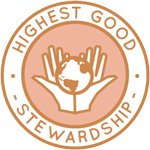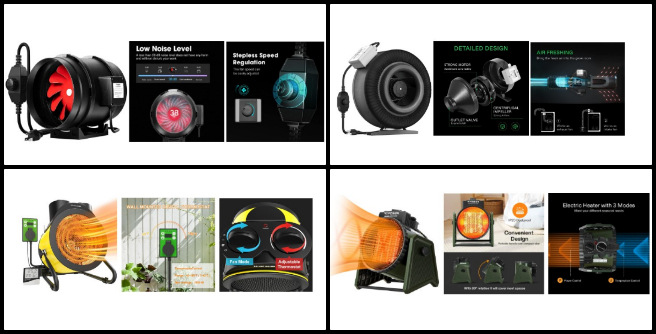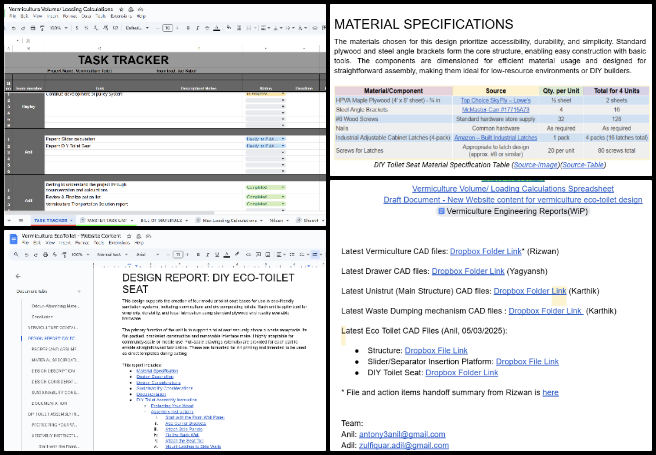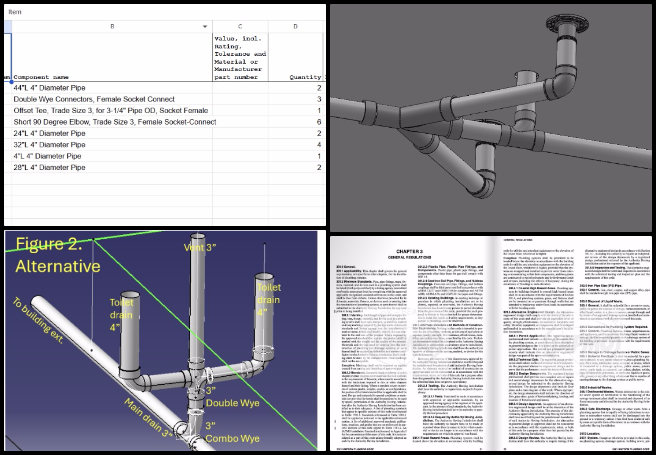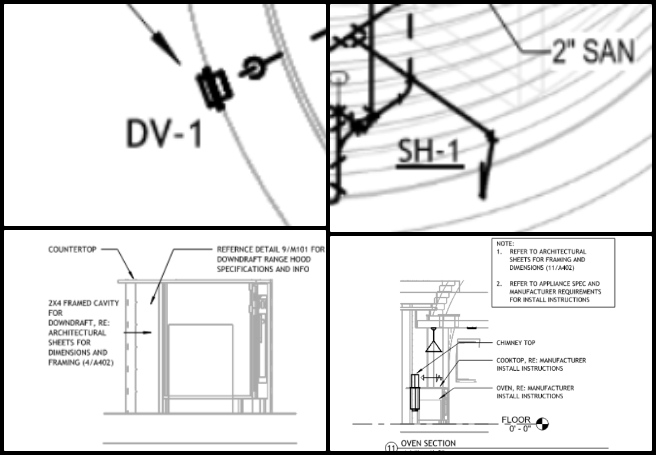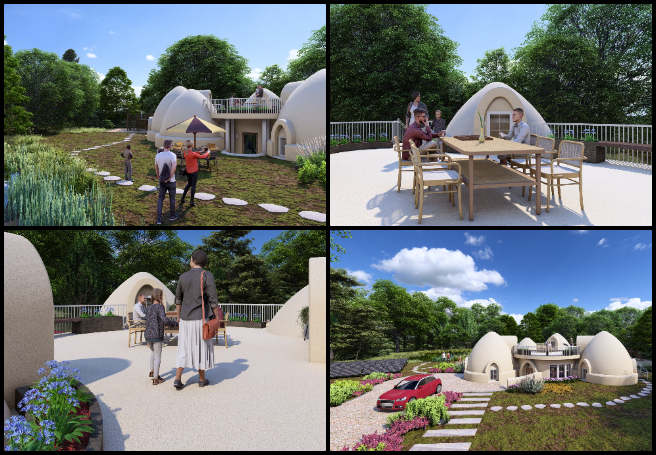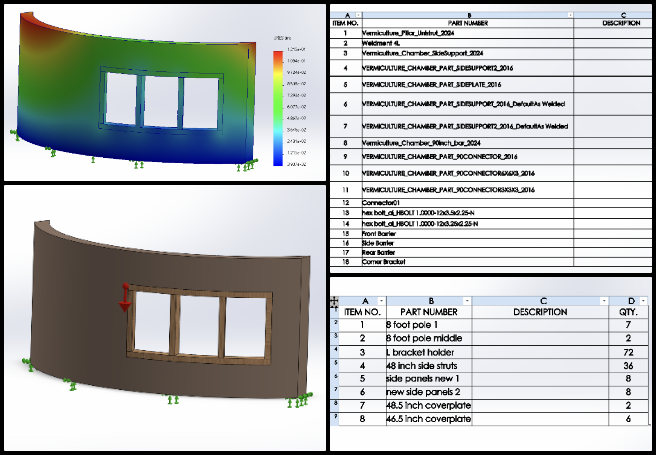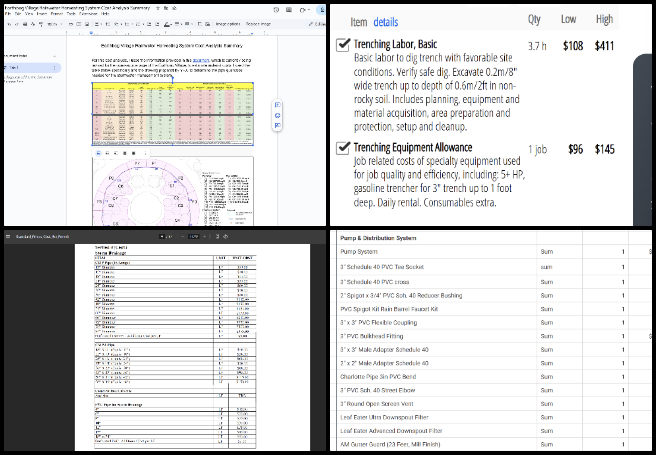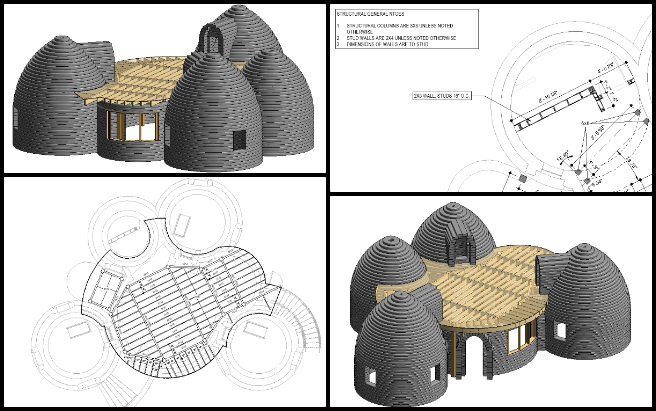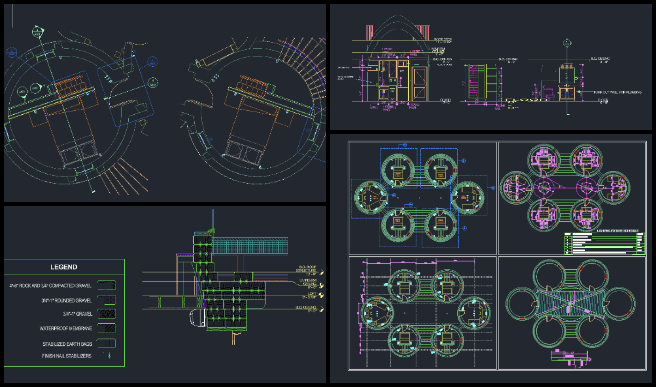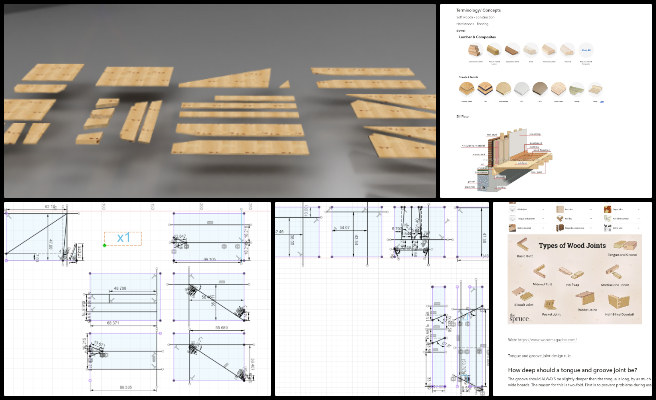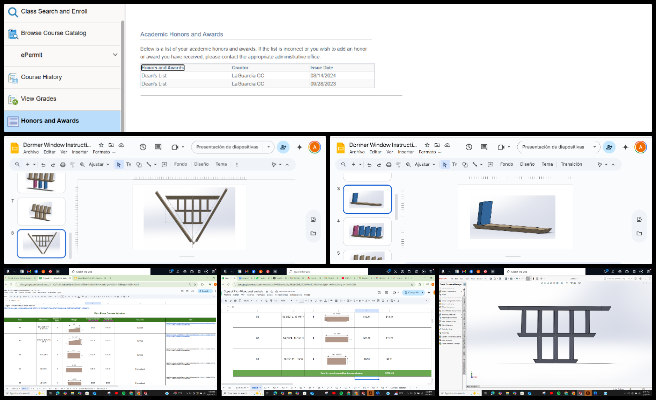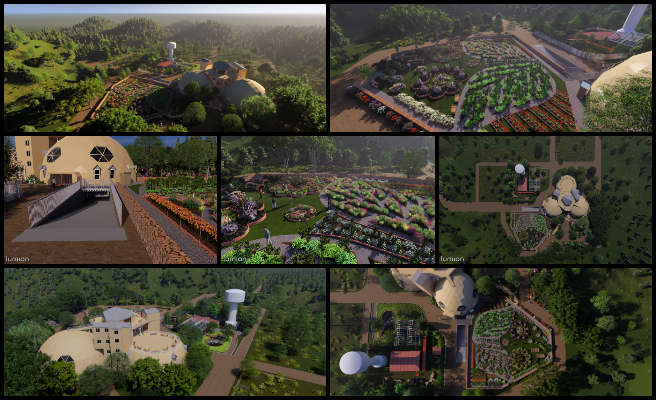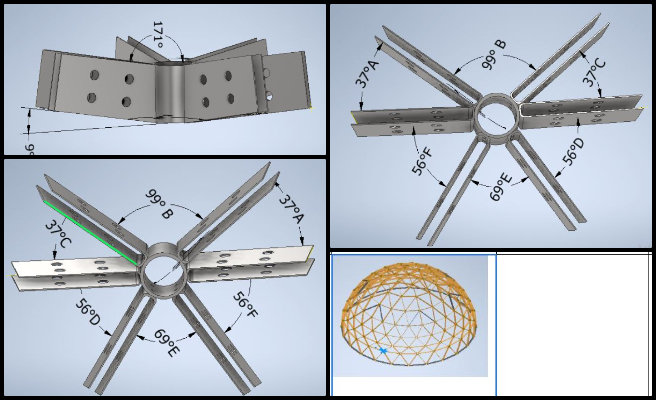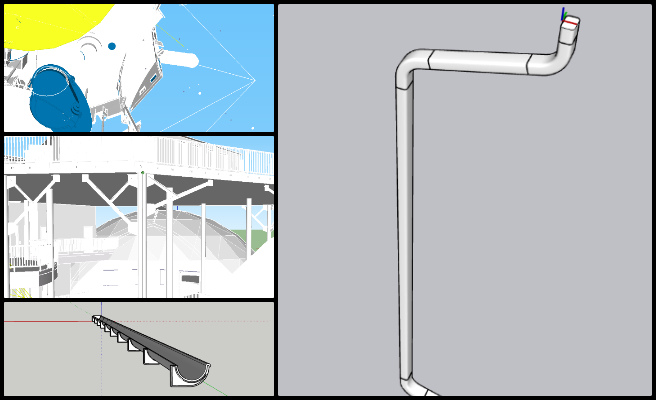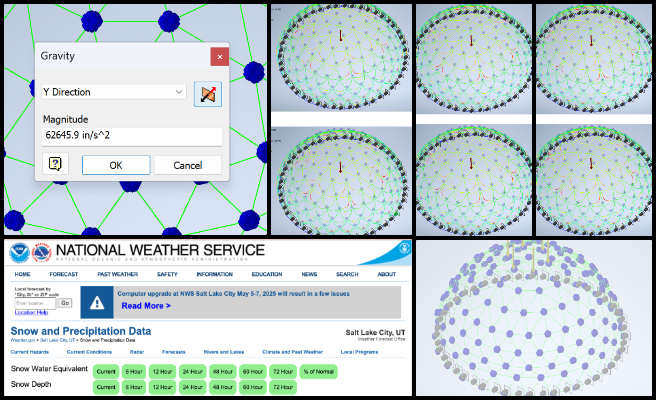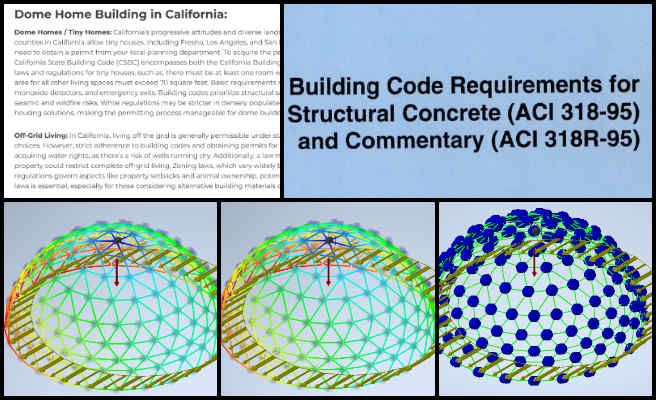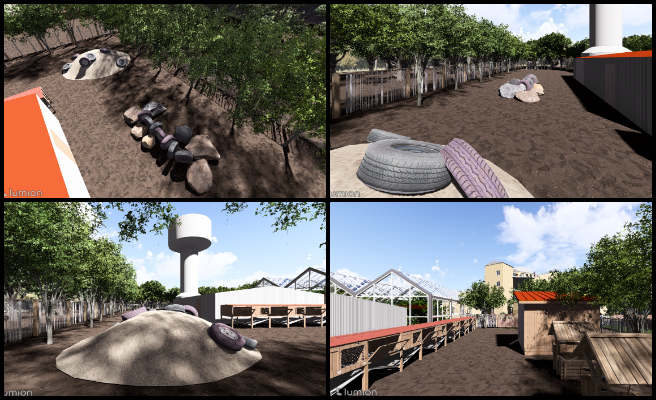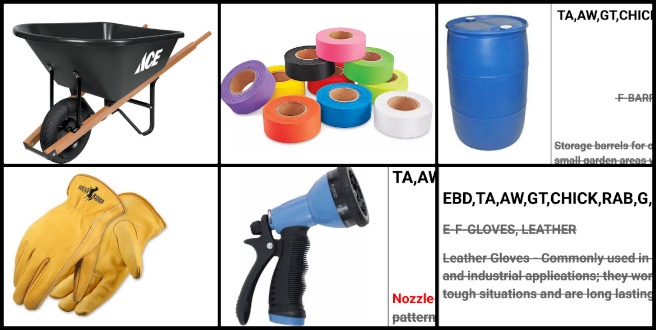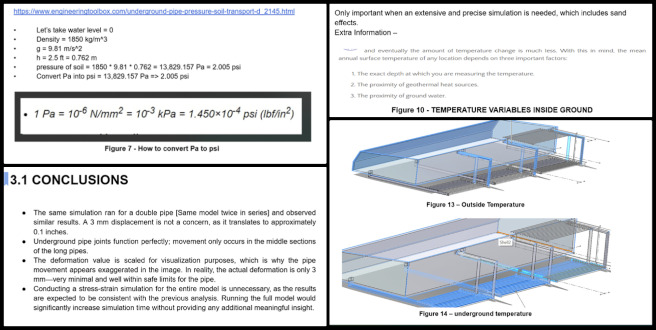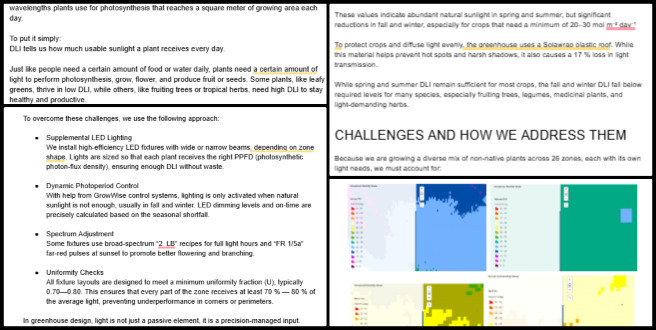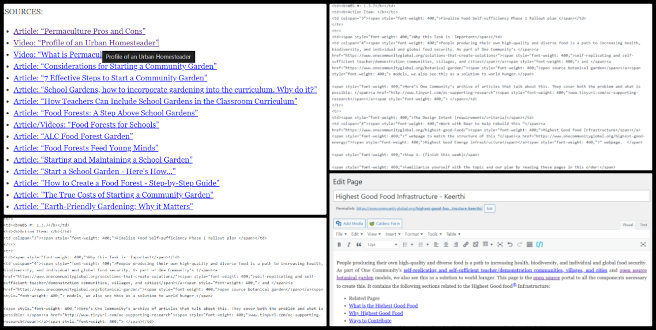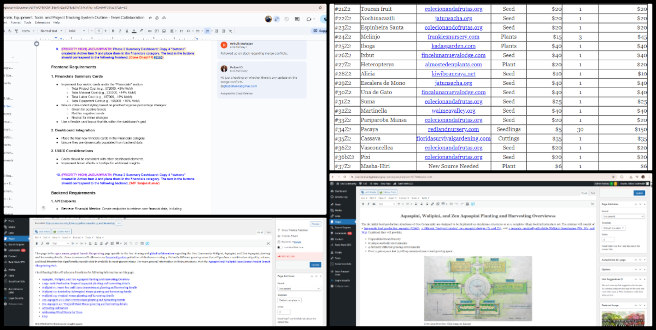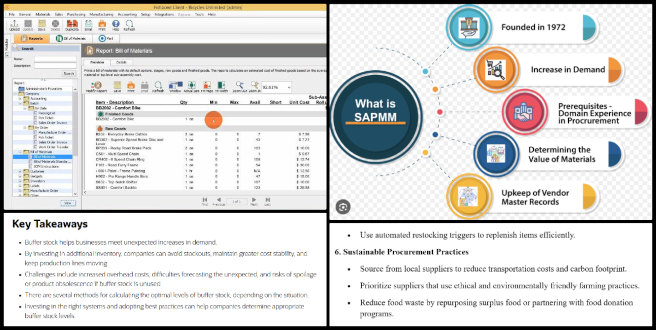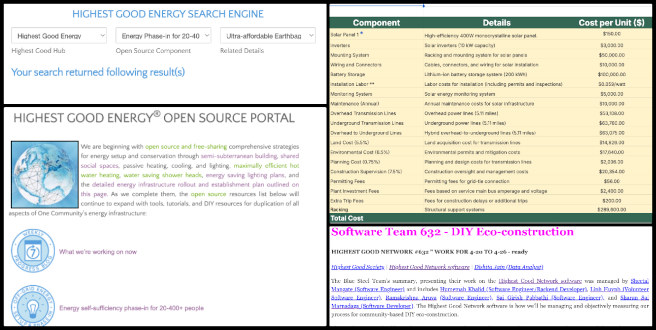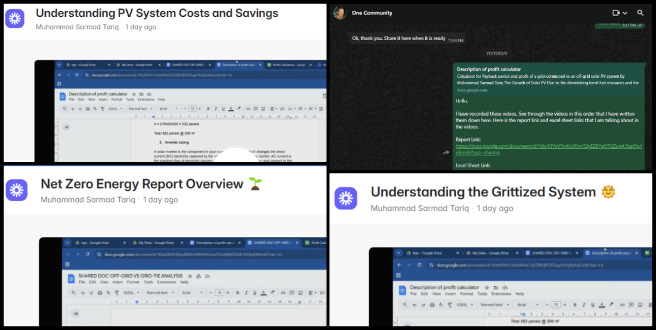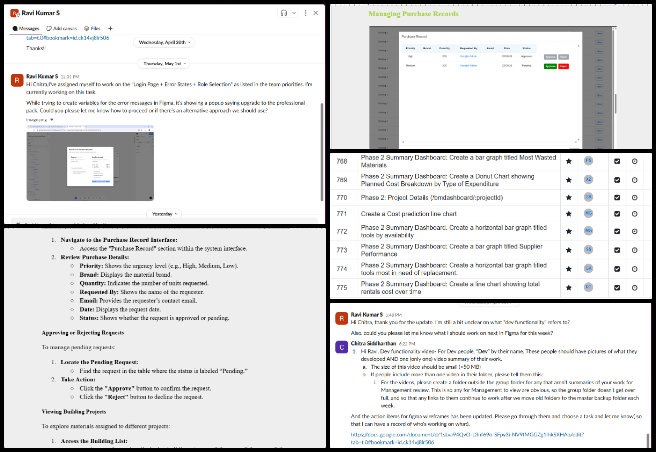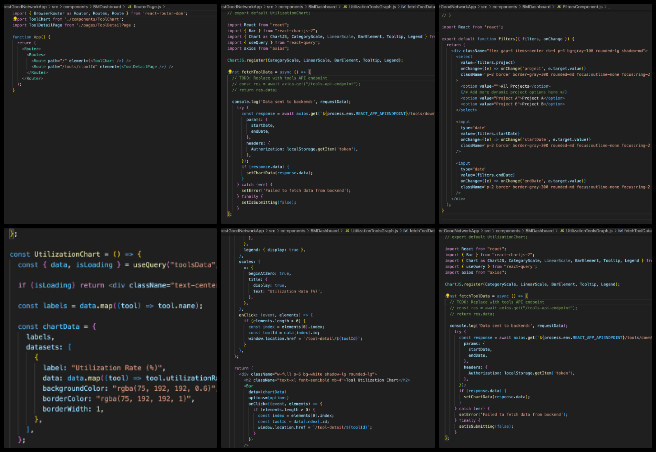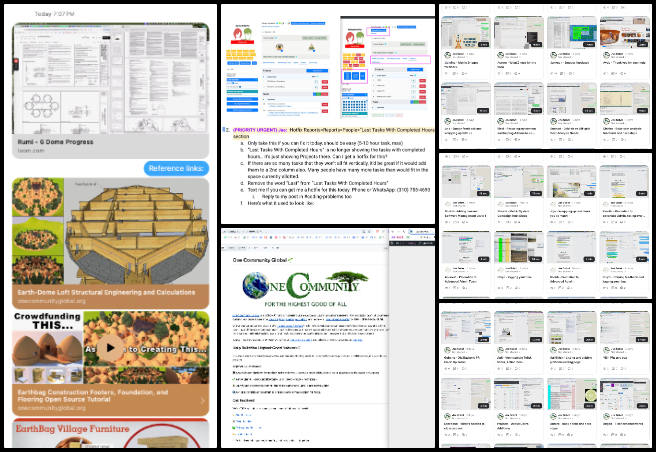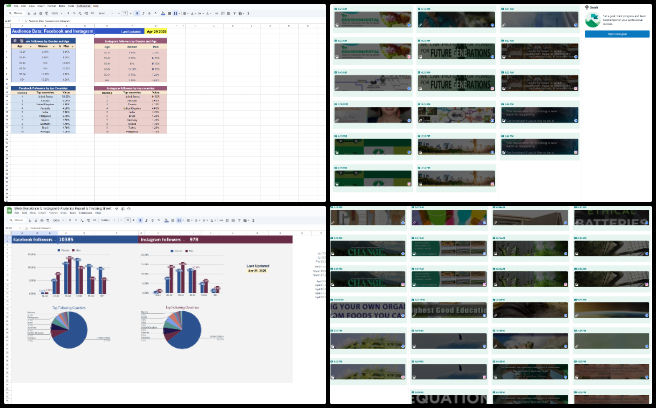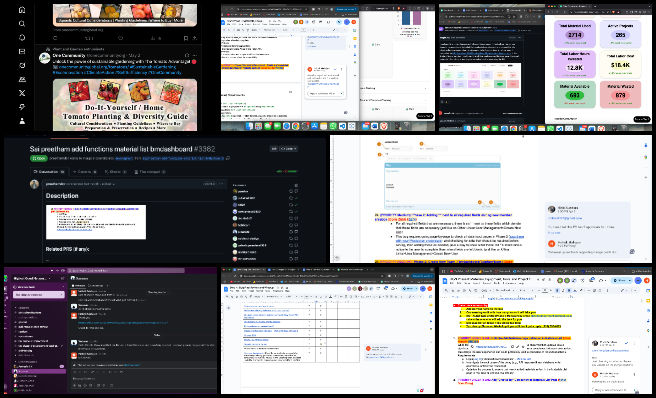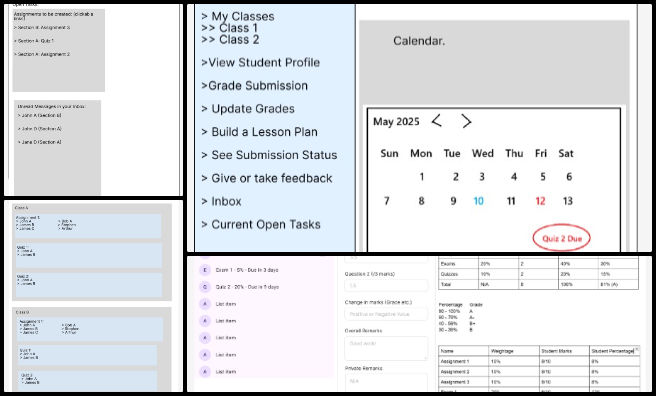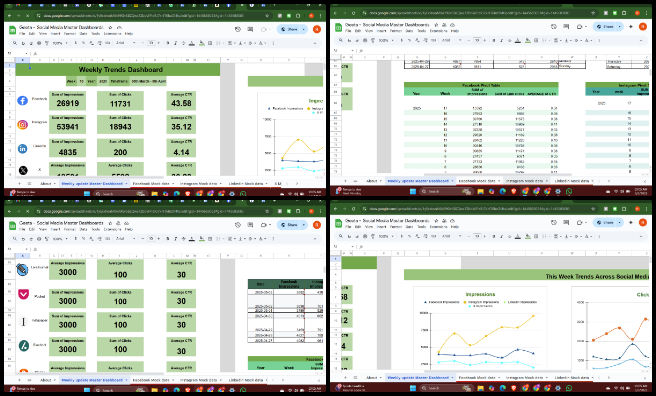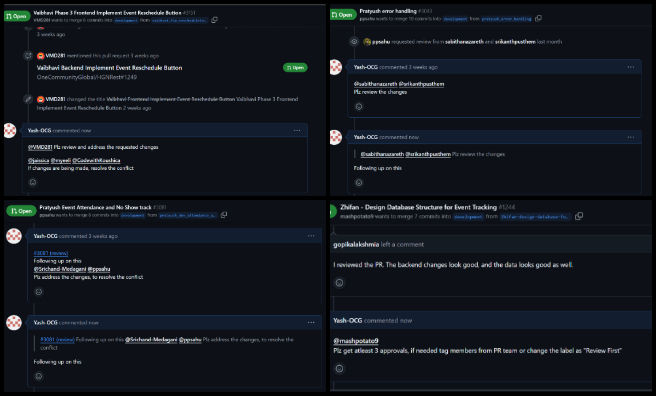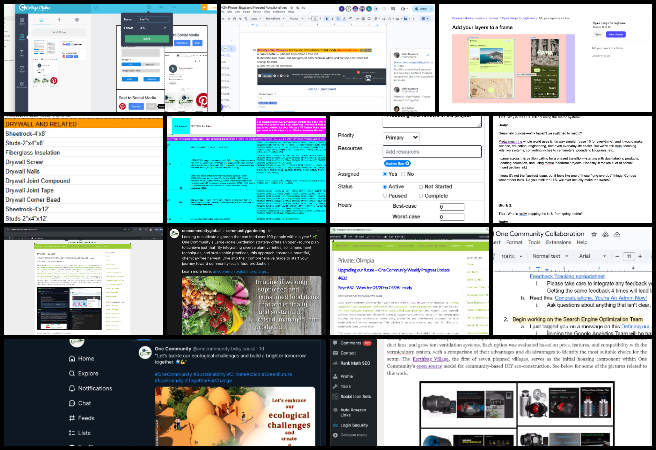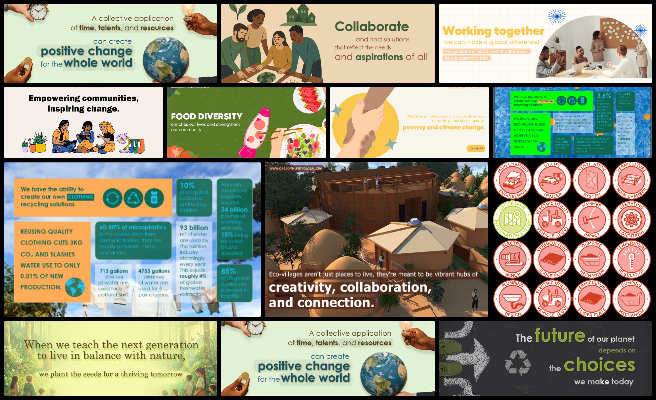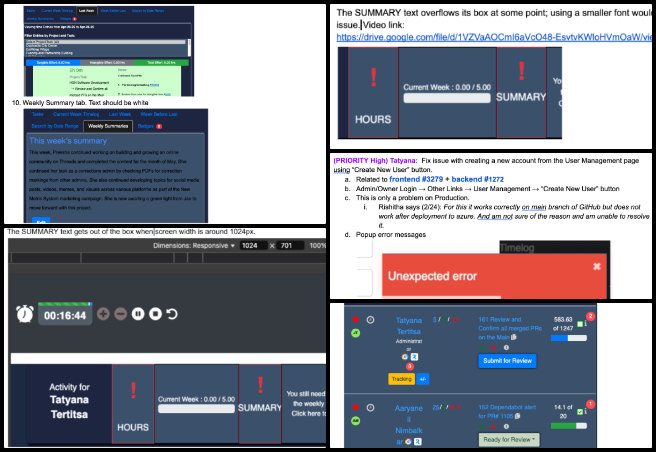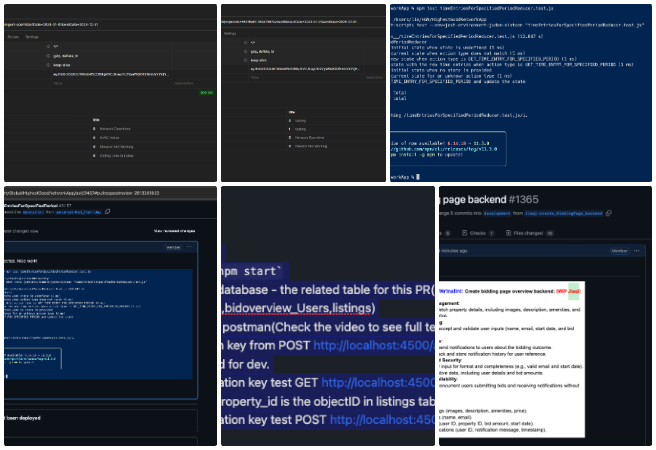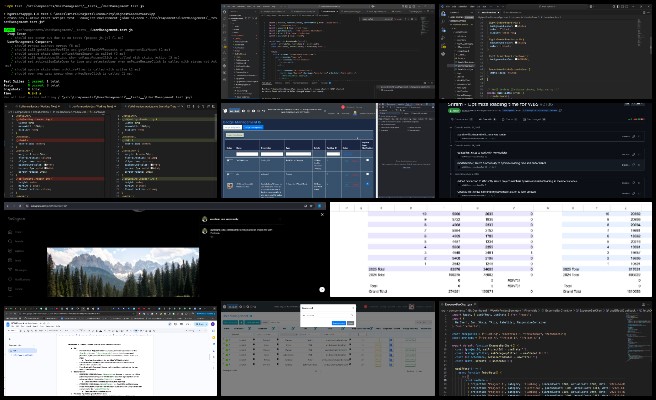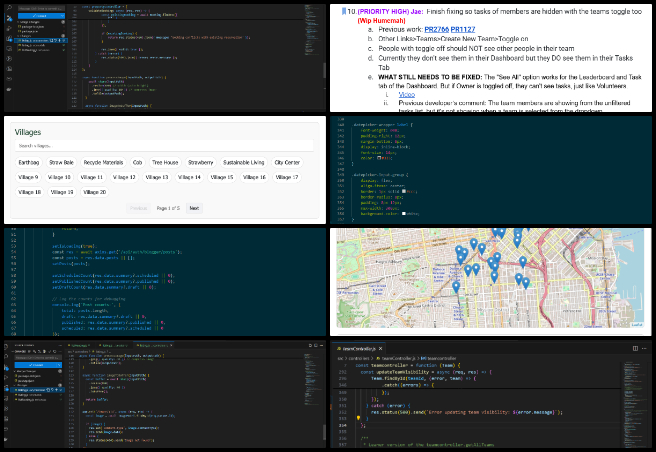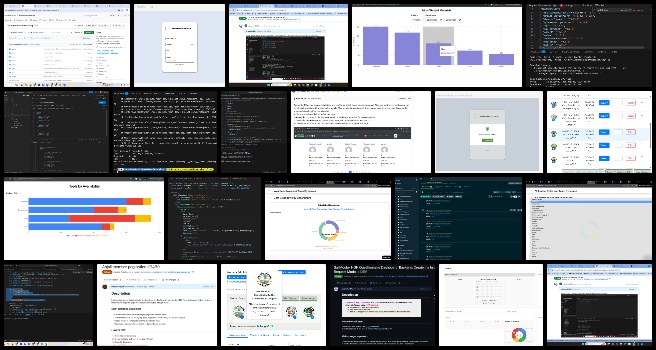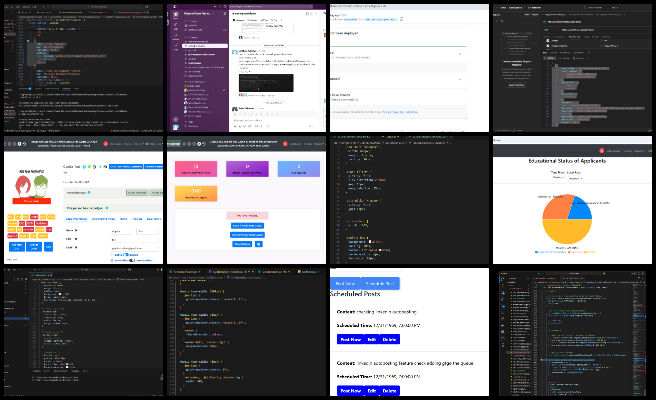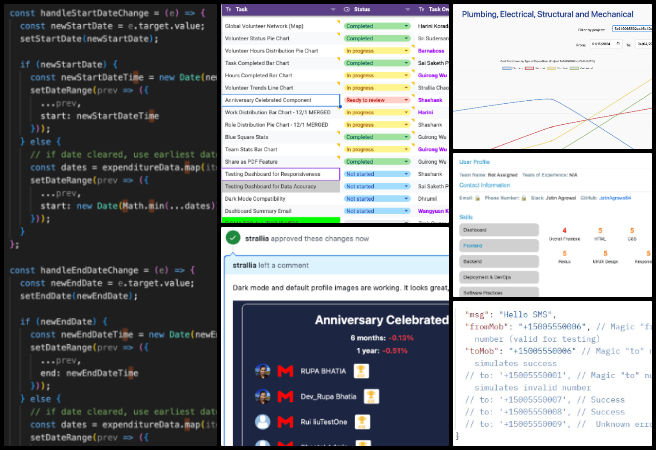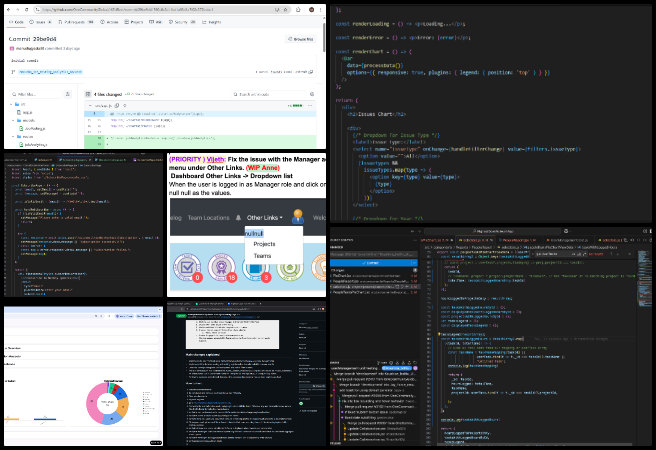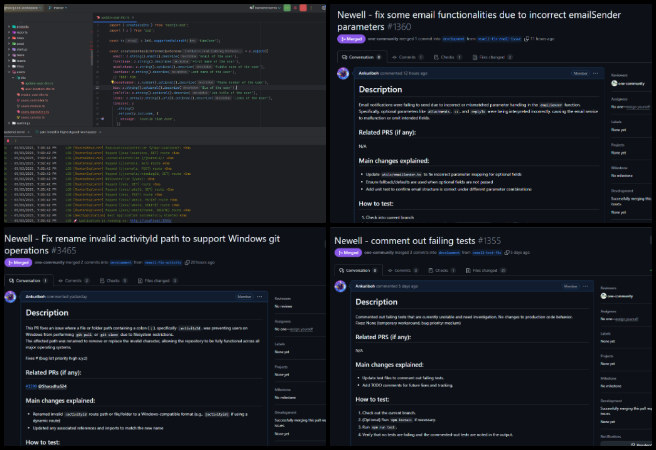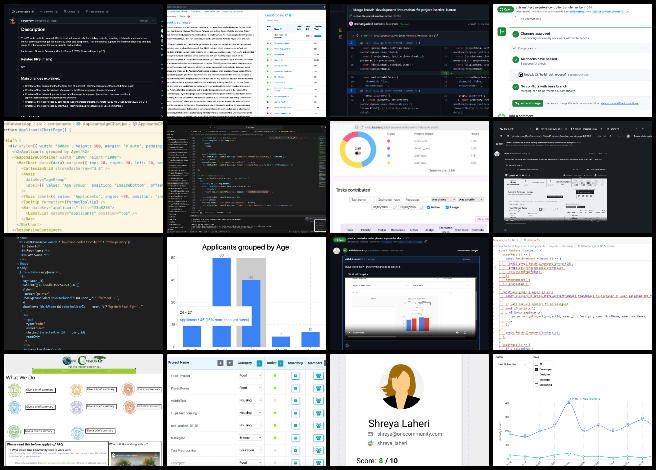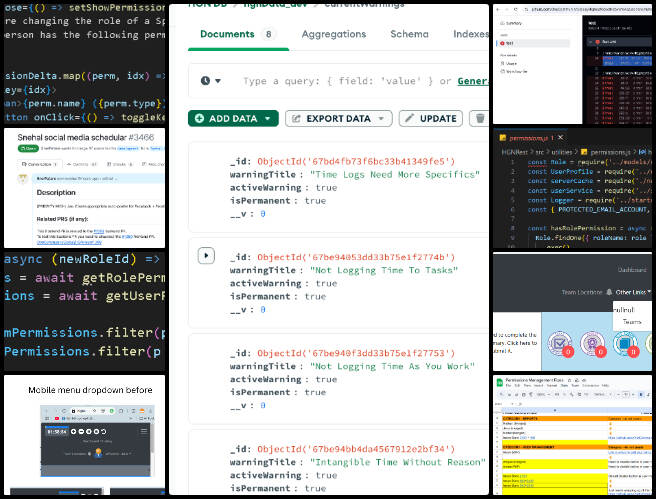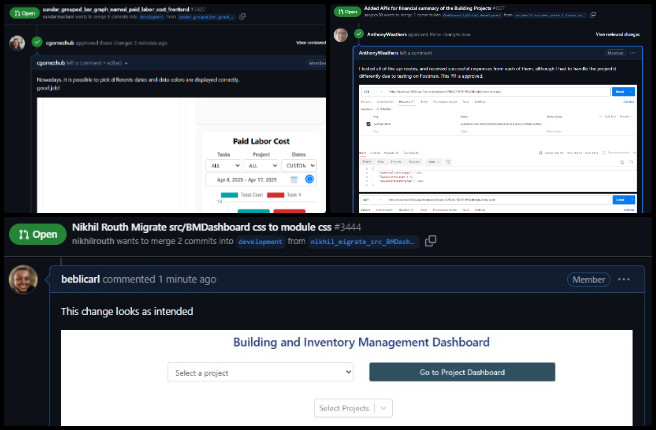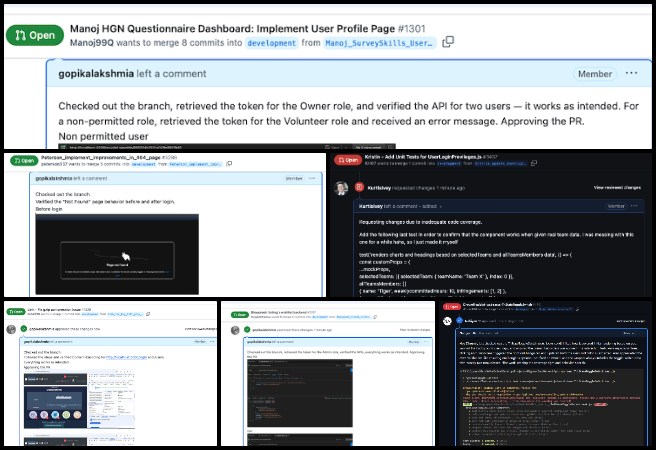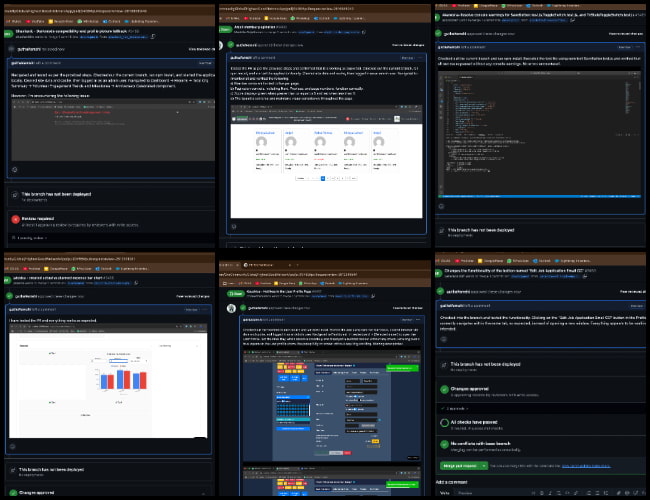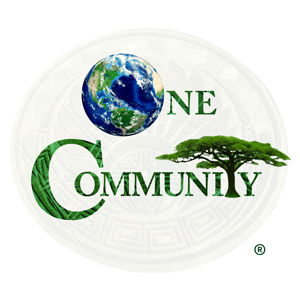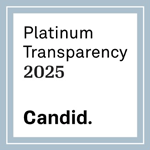Global-Sustainability Systems Management – One Community Weekly Progress Update #633
At One Community, we are pioneering global-sustainability systems management to develop sustainable approaches to food, energy, housing, education, economics, and social architecture. Our all-volunteer team is dedicated to creating a self-replicating model designed for “The Highest Good of All.” By open sourcing and free sharing our complete process, we aim to foster a global collaboration of teacher/demonstration hubs, evolving sustainability, and creating a world that works for everyone. Through our efforts, we strive to regenerate our planet and promote fulfilled living for all.
- Here’s our project overview
- Here’s our world-change methodology
- Here’s how this becomes self-replicating
- Here’s how we are open source and free-sharing all the do-it-yourself designs
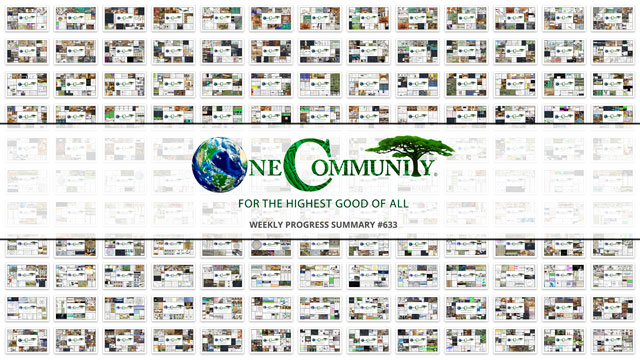
OUR MAIN OPEN SOURCE HUBS
Click on each icon to be taken to the corresponding Highest Good hub page.
One Community’s physical location will forward this movement as the first of many self-replicating teacher/demonstration communities, villages, and cities to be built around the world. This is the May 5th, 2025 edition (#633) of our weekly progress update detailing our team’s development and accomplishments:
Global-Sustainability Systems Management
One Community Progress Update #633
DONATE | COLLABORATE | HELP WITH LARGE-SCALE FUNDING
CLICK HERE IF YOU’D LIKE TO RECEIVE AN EMAIL EACH WEEK WHEN WE RELEASE A NEW UPDATE
YOU CAN ALSO JOIN US THROUGH SOCIAL MEDIA
ONE COMMUNITY WEEKLY UPDATE DETAILS
HIGHEST GOOD HOUSING PROGRESS
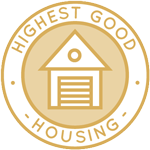 One Community is pioneering global-sustainability systems management through Highest Good housing that is artistic and beautiful, more affordable, more space efficient, lasts longer, DIY buildable, and constructed with healthy and sustainable materials:
One Community is pioneering global-sustainability systems management through Highest Good housing that is artistic and beautiful, more affordable, more space efficient, lasts longer, DIY buildable, and constructed with healthy and sustainable materials:
- Learn about: Our Upcoming Crowdfunding Campaign
- Learn about the different village models: 7 Sustainable Village Models
- Visit the open source portals for the first two: Earthbag Village OS Hub | Straw Bale Village OS Hub
This week, Adil Zulfiquar (Engineer) continued working on the Vermiculture Toilet engineering designs. Adil worked on the temperature monitoring and control report, exploring different categories of additional options for both heating and cooling devices. These options were added to the report along with their specifications and relevance to the vermiculture system. Additional research was done to assess the most suitable devices by comparing the pros and cons of each listed option. The Earthbag Village, the first of seven planned villages, serves as the initial housing component within One Community’s open source model for global-sustainability systems management. See below for some of the pictures related to this work.
Anil Karathra (Mechanical Engineer) continued advancing the engineering and design of the Vermiculture Toilet for the Earthbag Village project. Final feedback from Jae was integrated into all reports and documentation, including the collaboration document, engineering document, website content, and task tracker. Participation in the weekly team meeting included handing over meeting responsibilities to Adil and gathering task progress updates from team members for Jae. All remaining documents were formatted and finalized, and ownership was transferred to Jae. CAD files and related data were organized and uploaded to Dropbox to support a smooth transition. Final closeout procedures were completed, and the final weekly summary along with the last set of screenshots was uploaded. This commitment to global-sustainability systems management drives the development of innovative, eco-friendly solutions that balance environmental responsibility with high standards of functionality. See below for pictures related to this work.
Audrey Gunawan (Mechanical Engineer) continued working on the Vermiculture Toilet plumbing details. Audrey received the format for the engineering report and completed the bill of materials for the model. She reviewed the report requirements and began compiling information, referencing the Uniform Plumbing Code to include relevant details. She searched for alternate and lower-cost parts online and reviewed diagrams that will be included in the report. Audrey also reread existing reports and started formatting the written plumbing section. As the first of seven planned villages, Earthbag Village provides the initial housing within One Community’s open source designs for global-sustainability systems management. See below for some of the pictures related to this work.
Derrell Brown (Plumbing Designer) continued working on the Earthbag Village 4-dome home plumbing details. Derrell coordinated with Michaela on Monday to address follow-up items related to finalizing the mechanical and plumbing. The work included adding an oven and kitchen island detail referenced from the architectural sheets, updating the exhaust fan schedule to include dryer vent details, updating the pipe material and insulation schedule to include remarks, and modifying riser diagrams to remove unnecessary aesthetic elements from the plans. To implement these changes, he referenced architectural drawings for appliance, framing, and dimension details. After completing these revisions, he plotted the mechanical and plumbing plans for the architect’s final review. One Community’s open source launching of global-sustainability systems management begins with Earthbag Village, the first of seven planned villages providing housing. See below for some of the pictures related to this work.
Faeq Abu Alia (Architectural Engineer) continued his work on the Earthbag Village 4-dome home renders. Faeq worked on walkthrough video renders to present the enhanced outdoor space of the 4-dome home, focusing on the addition of natural features and detailed landscaping elements. The work involved updating the exterior area of the project and incorporating these changes into the visual presentation. The Earthbag Village is the first of 7 to be built as the housing component of One Community’s open source plans for global-sustainability systems management. View examples of this work in the pictures provided below.
Karthik Pillai (Mechanical Engineer) continued helping finish the Earthbag Village 4-dome home roof plan. Karthik worked on the structural analysis of the window beam for the walls of the roof dome cluster project, completed the analysis, and shared the results with Michaela. The finite element analysis results were found to be valid, and the design was finalized. Planning began for work on the roof rafters that span between the joists. For the vermiculture toilet structure, Karthik continued preparing a detailed report, which remains in progress. An attempt made last week to replace the unistruts with aluminum extruded struts for increased flexibility was reevaluated, and the decision was made to continue using unistruts due to their global availability. As the first of seven planned villages, the Earthbag Village provides the initial housing within One Community’s open source designs for global-sustainability systems management. See the work in the collage below.
Ketsia Kayembe (Civil Engineer) continued working on the Earthbag Village designs related to Rainwater Harvesting and Water Catchment. Ketsia reviewed the updated CAD files of the stormwater management system for the Earthbag Village provided by Yi-Ju. She revised the stormwater management content for the Earthbag Village open-source page, updating the inlet sections with recent information and removing unnecessary or unverified content. She checked the text for errors and inaccuracies and made corrections as needed. Ketsia also worked on updating and finalizing the first draft of the cost analysis based on feedback from Yi-Ju. And Ketsia met with Yi-Ju to discuss their respective progress and exchanged comments and suggestions on the work completed. One Community’s open source model for global-sustainability systems management begins with Earthbag Village, the first of seven planned villages providing housing. See below for some of the pictures related to this work.
Michaela Silva (Architect) continued working on the architectural details for the Earthbag Village 4-dome home design. Michaela progressed the coordination of the MEP and structural elements of the four-dome home. The plumbing wall in the kitchen and bathroom dome was increased to 2×8 to allow adequate space for piping within the wall. She began modeling the remaining roof framing components and the secondary horizontal structural members, the joists. As the first of seven villages in One Community’s open source plan for global-sustainability systems management, the Earthbag Village represents the housing element. See her work in the collage below.
Rumi Shah (Civil Engineer) continued working on the Earthbag Village upgrades to bring our designs closer to construction-ready plans. Structural columns were added to the plumbing section and furniture layouts were incorporated into the architectural set to provide spatial reference based on integrated feedback. All updates, including architectural, structural, and plumbing elements, were consolidated into a single coordinated file format to align with the reference drawing set for consistency and streamlined review. Layer management, annotation standards, and drawing organization were checked to ensure they followed industry best practices to support construction-readiness. One Community’s open source resources for global-sustainability systems management begin with the Earthbag Village, the first of seven planned villages providing housing. See below for some of the pictures related to this work.
Yi-Ju Lien (Environmental Engineer) continued her work on the Earthbag Village LEED points related to stormwater retention. Yi-Ju continued work on the catchment area plan for stormwater management, building on progress from the previous week. She refined the identification of catchment zones contributing to water harvesting and selected appropriate ground materials aligned with both stormwater management and harvesting goals. Her work included coordinating these components with the placement of the drainage system and the ground elevation layout for the Earthbag Village, highlighting the importance of maintaining collaboration and unity in global-sustainability systems management. See some of the work done in the collage below.
DUPLICABLE CITY CENTER PROGRESS
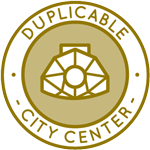 One Community is pioneering global-sustainability systems management through a Duplicable and Sustainable City Center that is LEED Platinum certified/Sustainable, can feed 200 people at a time, provide laundry for over 300 people, is beautiful, spacious, and saves resources, money, and space:
One Community is pioneering global-sustainability systems management through a Duplicable and Sustainable City Center that is LEED Platinum certified/Sustainable, can feed 200 people at a time, provide laundry for over 300 people, is beautiful, spacious, and saves resources, money, and space:
- Learn about this building and it’s function: Duplicable City Center Open Source Hub
This week, Andrew Chen (Industrial Designer) continued working on the Dormer second-floor window for the Duplicable City Center. He researched materials and joint designs for components that carry higher loads. He completed cutting the window frame into assembly parts, with dimensions documented in the drawing file. He also created a 3D assembly model in Fusion 360, which can be used to generate 3D animations and 2D assembly instructions. As a cornerstone of One Community’s open-source initiative, the Duplicable City Center reflects our focus on global-sustainability systems management. Browse the photos below for a look at this work.
Ariana Virginia Gutierrez Doria Medina (Industrial Designer) has continued the analysis and cost estimation of the windows for the Duplicable City Center. The cost analysis was completed. Taking into account three types of wood and the individual production process for each component. Work also began on the layout of the parts in preparation for assembly, which serve as the foundation for the development of the assembly manual. In addition, a brief market analysis was done to evaluate screw prices based on their durability and suitability for the project. The Duplicable City Center is a foundational part of One Community’s open-source model, representing our commitment to global-sustainability systems management. See some of this work in the pictures below.
Jason Bao (Architectural Designer) continued working on producing renders for the Duplicable City Center library. Adjustments were made to the base model to align with Jae’s specifications, including the addition of road networks following the geomap reference. Minor modifications and texture replacements were applied, and terrain details were expanded to enhance accuracy. Existing map discrepancies were corrected, and efforts were made to reduce file size and optimize system performance due to increasing complexity. Renders were produced to visualize terrain adjustments and road system updates for review and feedback. As a cornerstone of One Community’s open-source initiative, the Duplicable City Center reflects our focus on global-sustainability systems management. Browse the photos below for a look at this work.
Manjiri Patil (Mechanical Design Engineer) continued working on the designs for the Duplicable City Center DIY-replicable hub connector. She worked on updating the CAD files for the Dome structure, ensuring design accuracy and alignment with project specifications. In parallel, she is incorporating feedback provided by Jae on the manufacturing process documentation to enhance clarity and completeness. Additionally, Manjiri is actively addressing the backlog from last week to ensure all outstanding tasks are completed in a timely manner. Serving as a key feature of One Community’s open-source model, the Duplicable City Center supports our goals in global-sustainability systems management. View the images below to explore the progress.
Mihir Patki (Civil and Construction Engineer) worked on updating the 2D CAD drawings for the Duplicable City Center project. He continued work on the City Center water catchment updates, focusing on developing and refining the SketchUp model. He built the base structure, added the roof and catchment areas, and aligned the 3D layout with the updated CAD drainage and gutter drawings. Mihir adjusted slopes, organized model layers for easier editing, and worked on integrating the catchment system with the greywater layout. He also started creating two reusable components, gutters and pipe spouts, to add efficiently across the model as the design progresses. Additional time was spent refining drainage paths and preparing the model for the next phase of updates. A central element of our open-source development, the Duplicable City Center illustrates our approach to global-sustainability systems management. Pictures below highlight our work.
Shu-Tsun (Engineer) continued working on the Duplicable City Center by conducting the structural and frame analysis of the City Center dome using Autodesk Inventor, as well as working on the spreadsheet for which she is responsible. She had a meeting with Dipak, during which she received valuable feedback on her initial snow load analysis. Following his discussion, Shu-Tsun revised the analysis to align with Dipak’s suggestions, ensuring greater accuracy and adherence to project standards. And she is currently gathering load magnitudes from various sources, compiling both the values and their references into a spreadsheet. The Duplicable City Center plays a vital role in One Community’s open-source plans and highlights our emphasis on global-sustainability systems management. See the images below for more.
Srujan Pandya (Mechanical Engineer) continued helping with the Duplicable City Center FEA analysis. He researched various dome codes applicable to building and steel structures across different states, reviewing the associated regulations and standards. In parallel, he modeled an earthquake loading scenario by applying continuous horizontal loads of 5 pounds/inch and 50 pounds/inch along the base rows of the dome, with gravity enabled and the topmost part of the dome constrained. The setup and analysis included constraints and material property definitions, and screenshots of the resulting deformations were captured. The results showed significant variation when the material was switched from LVL2 to steel, indicating that earlier simulations may have been performed using steel due to the lower deformation values. Srujan scheduled a meeting with Dipak to review both the new results and the dome code references, as well as to clarify loading requirements under various weather conditions, which had proven difficult to locate through open-source resources. Designed as part of One Community’s open-source vision, the Duplicable City Center aligns with our mission for global-sustainability systems management. Some examples can be seen in the photos below.
Yan “Jenni” Zu (Architectural Designer) continued her work on the greenhouse area of the Duplicable City Center. She continued to optimize the animal area. She modified the plants, animals, and ground materials to make the scene more vivid and diverse. In addition, Jenni completed several draft renderings from different angles to better present the layout and atmosphere of the animal area, clarifying the design intent and spatial organization. The Duplicable City Center is an essential part of One Community’s open-source project, developed with a focus on global-sustainability systems management. View related images below.
HIGHEST GOOD FOOD PROGRESS
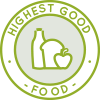 One Community is pioneering global-sustainability systems management through Highest Good food that is more diverse, more nutritious, locally grown and sustainable, and part of our open source botanical garden model to support and share bio-diversity:
One Community is pioneering global-sustainability systems management through Highest Good food that is more diverse, more nutritious, locally grown and sustainable, and part of our open source botanical garden model to support and share bio-diversity:
- Learn about the structures: Hoop House Hub | Aquapini & Walipini Open Source Hub
- See what we’ll be growing: Gardens & Hoop Houses | Large-scale Structures | Food Forest | TA
This week, the core team completed adding photos to the Master Tools, Equipment, and Materials/Supplies document, including items related to the Goat, Chicken, and Rabbit sections. They finalized the addition and alphabetization of tools, equipment, and materials/supplies to the Goat Section’s inventory list. Six photographs were incorporated into the weekly summary report. Duplicate entries for pex pipe and the electrical test kit were removed from the Master list, and corresponding summaries were updated. Subsequently, individual inventory lists were generated for the Chicken and Rabbit sections, with these lists cross-referenced and aligned against the established Goat Section inventory. The Highest Good Food initiative is a key component of One Community’s open source plans, focused on global-sustainability systems management, and exemplifies the organization’s commitment through innovative design and implementation. Below are some of the images showcasing this work.
Dirgh Patel (Volunteer Mechanical Engineer) continued assisting with the Climate Battery design evolutions. He completed the final report on thermal and stress-strain simulations, documenting eight thermal cases across three locations: outside, underground at 2.5 feet, and inside the greenhouse. He added all remaining technical details, including the reason for changing pipe thickness, boundary conditions, meshing strategy, temperature distribution images, and convection setup. He completed the report according to the provided guidelines and finalized both simulation sections. Dirgh consolidated all Word documentation into a Google Doc to improve accessibility and collaboration, incorporating related links, visuals, and a supporting video. One Community’s open source mission is powerfully reflected in the Highest Good Food initiative, which is focused on advancing global-sustainability systems management for global benefit. The following visuals highlight key outcomes of this initiative.
Jay Nair (BIM Designer) continued working on Aquapini and Walipini Planting and Harvesting lighting and HVAC design. He added a section to the document that outlines the Daily Light Integral (DLI) values for the project location to support more accurate lighting assessments. He also refined the Lighting Energy Calculation Template by adjusting its structure and formatting, and updated the energy calculations for Zones 1 through 3 based on the revised inputs and layout. The Highest Good Food initiative plays a leading role in One Community’s open source platform, promoting global-sustainability systems management through sustainable and participatory development. Below are some of the images showcasing this work.
Keerthi Reddy Gavinolla (Software Developer) continued working on the Highest Good Food page additions, covering small-business and urban community options. She reviewed the Expressers team’s work, created their team collage, commented on their documents, and updated Blog #632. Updated the Highest Good Food Infrastructure website by editing the format, fixing links, and submitting the updated version to Jae for review. She also reviewed the bugs document, identified open PRs ready for merging, and shared the details with Jae. Built on One Community’s open source foundation, the Highest Good Food initiative drives global-sustainability systems management to empower communities with self-sustaining systems. Her contributions are highlighted in the collage below.
Pallavi Deshmukh (Software Engineer) continued working on adding the new Zenapini 2 content to the Aquapini and Walipini Planting and Harvesting page. She created blog 632, focused on global-sustainability systems management. She began work on the webpage for Aquapini and Walipini Planting and Harvesting, formatting text, editing images, and adding SEO keywords. Pallavi also reviewed all the documents linked at the top of HGN Phase I as instructed and checked the status of pull requests to determine if any are ready to be merged. Fulfilling One Community’s open source objectives, the Highest Good Food project integrates global-sustainability systems management into a larger vision of regenerative living. Her contributions are highlighted in the collage below.
Tanmay Koparde (Industrial Engineer and Team Administrator) continued optimizing the Food Procurement and Storage Plan to enhance efficiency and sustainability. He initiated key supply chain concepts and carried out an in-depth analysis of FIFO, LIFO, Just-In-Time procurement, SAP (Systems, Applications & Products in Data Processing) MM, and EWM. He assessed their applicability within the project scope, identifying strengths and limitations, and developed clear, actionable implementation steps to integrate these methodologies into current practical workflows. Through the lens of open source development, One Community’s Highest Good Food initiative utilizes global-sustainability systems management to support replicable ecological solutions. See his work in the collage below.
HIGHEST GOOD ENERGY PROGRESS
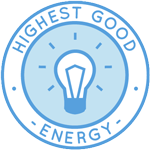 One Community is pioneering global-sustainability systems management through Highest Good energy that is more sustainable, resilient, supports self-sufficiency and includes solar, wind, hydro and more:
One Community is pioneering global-sustainability systems management through Highest Good energy that is more sustainable, resilient, supports self-sufficiency and includes solar, wind, hydro and more:
- Learn about the open source sustainable-energy foundations: Solar, Hydro, and Wind
- Explore our research into the most sustainable products and companies for saving water and energy: Insulation, Eco-laundry, Lightbulbs and Light Bulb Companies, Doors and Door Companies, Windows and Window Companies, Toilets, Faucets and Faucet Accessories, Urinals, and more.
This week, Dishita Jain (Data Analyst) continued assisting with the Highest Good Energy research and cost analysis for global-sustainability systems management. She worked on the Energy Infrastructure Cost Analysis and Visualizations task under the HG Energy project. She completed a team review for the OC Administration Training Team by creating a collage and adding a team summary to WordPress, and addressed feedback related to solar panel cost analysis and cross-checked the search bar content with the sub-categories for Highest Good Energy to ensure coverage. Dishita also incorporated additional resources and updated the Excel sheet based on feedback from Jae. One Community’s open source mission is powerfully reflected in the Highest Good Energy initiative, which is focused on advancing global-sustainability systems management for global benefit. Below are some of the images showcasing this work.
Muhammad Sarmad Tariq (Electrical Engineer) continued assisting with off-grid and grid-tied Solar Microgrid comparisons as part of the Highest Good Energy component. This is part of research for global-sustainability systems management, covering sustainable power supply. He completed a draft version of the report on the calculator for calculating profit and net savings for an off-grid and a grid-tied solar PV system. He sent Jae a draft version of this report and the Excel sheet calculations used in this report. He recorded a set of videos describing the report so that Jae can give feedback regarding this. Driven by its open source philosophy, One Community created the Highest Good Energy initiative to pioneer sustainable practices through advancing global-sustainability systems management. See his work in the collage below.
HIGHEST GOOD EDUCATION PROGRESS
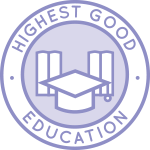 One Community is pioneering global-sustainability systems management through Highest Good education that is for all ages, applicable in any environment, adaptable to individual needs, far exceeds traditional education standards, and more fun for both the teachers and the students. This component of One Community is about 95% complete with only the Open Source School Licensing and Ultimate Classroom construction and assembly details remaining to be finished. We’ll report on the final two elements to be finished as we develop them. With over 8 years of work invested in the process, the sections below are all complete until we move onto the property and continue the development and open sourcing process with teachers and students – a development process that is built directly into the structure of the education program and everything else we’re creating too:
One Community is pioneering global-sustainability systems management through Highest Good education that is for all ages, applicable in any environment, adaptable to individual needs, far exceeds traditional education standards, and more fun for both the teachers and the students. This component of One Community is about 95% complete with only the Open Source School Licensing and Ultimate Classroom construction and assembly details remaining to be finished. We’ll report on the final two elements to be finished as we develop them. With over 8 years of work invested in the process, the sections below are all complete until we move onto the property and continue the development and open sourcing process with teachers and students – a development process that is built directly into the structure of the education program and everything else we’re creating too:
- Program Overview: Education Open Source Hub
- How the components work together in designing human orchestrated eco-abundance: How to use the Education for Life Program
- Lesson Plans for Life – Lesson Plans How-to
- Foundations of Outstanding Leaders, Teachers, and Communicators
- Curriculum for Life
- Teaching Strategies for Life
- Learning Tools and Toys for Life
- Evaluation and Evolution
This week, Chitra Siddharthan (Data Analyst and Team Administrator) continued focusing on updating the blog, weekly summary, and Dropbox files for Team Code Crafters for Week 632. The document shared by Harshitha containing updated action items for the Phase 4 Figma wireframes was reviewed, along with additional documents related to Figma deliverables. Tasks related to assignment and status updates were addressed based on requests from the software engineers working on Phase 2 action items. Work on the Phase 4 Figma continued, including progress on the teacher dashboard and resolving an issue raised on Slack. The login page designed by Ravi was reviewed, and a check-in was done with Anuneet to track her progress. Contributions were also made to the Phase 2 user manual, along with updates to the weekly summary and associated images. The One Community model of global-sustainability systems management with sustainably built classrooms like this is an excellent example of sustainable change for the whole planet. See the collage below for her work.
Mrinalini Raghavendran (Software Engineer) continued refining and documenting both frontend and backend requirements for various graphs. She worked on updating the code by editing the new components she created and applying additional styling. She made progress on the form by adding elements based on the requirements in the document she formulated. She further modularized the components for readability. Mrinalini also fixed bugs identified during local testing and added backend data handling using Axios. She rewrote the separate filtering component with updated styling and continued working on styling across the component pages. By forwarding global-sustainability systems management with classrooms like this, One Community provides a replicable example for global sustainable development. See the collage below for her work.
HIGHEST GOOD SOCIETY PROGRESS
 One Community is pioneering global-sustainability systems management through a Highest Good society approach to living that is founded on fulfilled living, the study of meeting human needs, Community, and making a difference in the world:
One Community is pioneering global-sustainability systems management through a Highest Good society approach to living that is founded on fulfilled living, the study of meeting human needs, Community, and making a difference in the world:
- Read the Highest Good society overview: Highest Good Society
- Learn about the model for fulfilled living and sharing: A Day in the Life
- Learn about the 4 economic models: RBE | For-profit | Non-profit | Entrepreneurship
- Learn about our open source community collaboration and management software: The Highest Good Network
This week, the core team completed over 48 hours managing One Community’s volunteer-work review not included above, emails, social media accounts, web development, new bug identification and bug-fix integration for the Highest Good Network software, and interviewing and getting set up new volunteer team members. They also shot and incorporated the video above that talks about global-sustainability systems management and how global-sustainability systems management are a foundation of the bigger picture of everything One Community is doing. The image below shows some of this work.
Govind Sajithkumar (Project Manager) continued focusing on Meta platform analytics and content management for Facebook and Instagram channels. He managed Meta platform operations for Facebook and Instagram, maintaining content rotation and analytics tracking across both channels. He refreshed social media feeds with new posts while recording all content details in the Open Source spreadsheet, including post descriptions, media types, and publishing timestamps. Govind aligned publication times with audience engagement windows to optimize reach. He updated the social media analytics spreadsheet with current audience metrics, collecting and processing new demographic data for both Facebook and Instagram platforms. He performed quality checks to ensure data integrity across reporting frameworks and updated dashboards with the latest audience performance statistics. Beyond Meta responsibilities, Govind completed administrative duties including PR Review Team management, providing feedback on team member documents, updating his WordPress site with team summaries, and maintaining PR tracking tables. This effort supports One Community’s broader mission of global-sustainability systems management. The images below showcase some of this work.
Hritvik Mahajan (Data Analyst) continued focusing on marketing and administrative tasks. He worked on both marketing and software testing initiatives. He spent time managing Twitter social media posting and strategy by sharing high-engagement content on Twitter communities and performing related research to support ongoing promotion efforts. In software development, Hritvik continued frontend testing for Phase 1 by reviewing various pull requests, identifying issues, and following up with multiple team members on Slack to address changes and resolve merge conflicts. He also contributed to administrative work by reviewing and commenting on the Step 4 Document related to Blog #632, focusing on the submissions from the admin team members. This initiative furthers One Community’s goal of advancing global-sustainability systems management. The following images show his work for the week.
Jaiwanth Reddy Adavalli (Project Manager) continued developing the Job Applicants page and the Highest Good Network Phase 2 Dashboard. He created multiple pages of wireframes and wrote action items to guide further software development. He simplified the user flow by mapping how users could navigate between the pages. As part of the PR review team, he reviewed the pull requests of the volunteer team assigned to him. This project plays an important role in One Community’s commitment to global-sustainability systems management. The following images show his work for the week.
Raghav Dinesh Pamuru (Product Manager) continued work on coordinating with cross-functional teams to update the project roadmap and ensuring that all development tasks aligned with weekly goals. He created a mock social media dashboard and integrated data from 20 different platforms. He edited various charts and tables within the dashboard to align with specific display requirements and ensure clarity in the presentation of key metrics. He also adjusted formatting elements to improve readability and refined data mappings to ensure accurate representation. Minor layout changes were made to improve the user experience and overall structure of the dashboard. It directly contributes to One Community’s mission of creating systems rooted in global-sustainability systems management. The images below showcase some of this work.
Yash Shah (Data Analyst and Team Administrator) continued his admin work and managed the social architecture component of the Highest Good Network software. He followed up directly on GitHub by tagging both reviewers and owners of pull requests that had unresolved conflicts, in order to get updates and move the process forward. A second round of follow-ups was also completed by tagging contributors again to review requested changes and confirm whether further action was needed. These efforts were aimed at clarifying the status of pending approvals and prompting the necessary responses to ensure progress on the affected pull requests. Additionally, he also created a blog post for Dev Dynasty, organized the folder for the week, compiled a collage, and provided feedback on fellow volunteers’ blogs. This work strengthens One Community’s pursuit of global-sustainability systems management. The following images show his work for the week.
ADMINISTRATION TEAM
The Administration Team summary, covering their work administrating and managing most of One Community’s ongoing process for global-sustainability systems management was managed by Bhakti Tigdi (Project Manager) and includes Anuneet Kaur (Administrator), Himanshu Mandloi (Engineering Project Manager), Jibin Joby (Data Analyst), Khushie Zaveri (Communication Strategist), Kishan Sivakumar (Administrative Assistant and Software Team Manager), Olawunmi “Ola” Ijisesan (Administrative and Management Support), Olimpia Borgohain (Data Analyst and Team Administrator), Preksha Welankiwar (Digital Marketing Manager), Rachna Malav (Data Analyst), Rishi Sundara (Quality Control Engineer and Team Administrator), Ryutaro (Ryu) Wongso (Economic Analyst and Team Administrator), Saumit Chinchkhandi (Administrative Assistant and Software Engineer), Vikas Pande (Software Administrator), and Vishnu Murali (Data Analyst). The Highest Good Network software is how we’ll be managing and objectively measuring our process for global-sustainability systems management through our social architecture, construction, production, and maintenance processes.
This week, the Administration team engaged in a range of activities supporting software development, research, campaign execution, and administrative coordination. Anuneet continued her research on sustainable alternatives to plastics and Styrofoam by reviewing scholarly sources and compiling statistics, and she began outlining webpage content for the Highest Good Education Program Licensing and Accreditation project. Himanshu completed daily timelog reviews, updated task hours, addressed member requests, and created a blog on community-based DIY eco-construction. Jibin collaborated with Vishnu to extract and visualize BlueSky analytics data, maintained daily posts, and updated feedback on the housing team’s work. Khushie developed a comprehensive campaign report for the metric system petition, created email and Reddit outreach templates, and worked on platform-specific messaging strategies. Kishan reviewed volunteer documents and SEO pages, addressed peer feedback, and began new admin assignments. This effort supports One Community’s dedication to global-sustainability systems management.
Ola reviewed PR team assessments, created documentation for admin use, and uploaded reports to designated folders. Olimpia analyzed new follower data on LinkedIn, updated blog content as needed, and worked on dashboard development correlating post activity and audience demographics. Preksha finalized Threads and LinkedIn content for May, checked correction-marked PDFs, and continued developing outreach content for the metric system campaign. Rachna focused on updating her SEO pages, maintained awareness of team activity via email and comments, and noted her one-year milestone with One Community. Rishi tested and followed up on multiple PRs, led an interview, made SEO improvements to Blog #632, and uploaded engineer collages to individual blogs. Ryutaro contributed to cost template refinement, reviewed development progress, and documented output in a new blog. Saumit managed PR workflows, tested frontend updates across multiple pull requests, and edited WordPress content. Vishnu continued posting to BlueSky, improved scraper code accuracy, cleaned data sets, and collaborated on metrics strategies with Jibin. This work contributes to One Community’s commitment to global-sustainability systems management. See below to view images of their work.
GRAPHIC DESIGN TEAM
The Graphic Design Team’s summary was managed by Harshitha Rayapati (Program Manager) and includes Aurora Juang (Graphic Designer), Junyuan Liu (Graphic Designer, UI/UX Designer), and Yafei (Jojo) Wu (Graphic/UIUX Designer) covering their work on graphic designs for global-sustainability systems management. This week, Aurora finalized chapter icons for the Seven Villages book and website, fixed broken links in the digital book, corrected errors in earlier social media bio announcements, and added to the library of content posts. She also created and published new volunteer bios using Google Sheets, maintaining consistency and accuracy across entries. Junyuan created social media content by collecting images, exploring design options in design software, and brainstorming ideas for future image creation. Work on the “Most Sustainable” image included reading, researching, writing supporting text, adjusting the layout, and revising earlier content based on feedback.
Yafei (Jojo) supported the release of finalized social media visuals, made adjustments based on post-launch feedback, and compiled best practices and lessons learned from the recent revision process. She also contributed to updating the visual brand guidelines to support consistent application of new standards and participated in early planning for the next round of social media content by gathering references and proposing initial design directions. See the Highest Good Society pages for more on how this contributes to global-sustainability systems management. See the collage below to view some of their work.
HIGHEST GOOD NETWORK PROGRESS
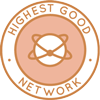 One Community is pioneering global-sustainability systems management through open source Highest Good Network® software that is a web-based application for collaboration, time tracking, and objective data collection. The purpose of the Highest Good Network is to provide software for internal operations and external cooperation. It is being designed for global use in support of the different countries and communities replicating the One Community sustainable village models and related components.
One Community is pioneering global-sustainability systems management through open source Highest Good Network® software that is a web-based application for collaboration, time tracking, and objective data collection. The purpose of the Highest Good Network is to provide software for internal operations and external cooperation. It is being designed for global use in support of the different countries and communities replicating the One Community sustainable village models and related components.
- Learn about our open source community collaboration and management software: The Highest Good Network
This week, the core team continued their work on the Highest Good Network PRs and confirmed fixes for assigning a project via the user profile (#3397), adding back the listing overview (#3307), adding Google Docs and Manager icons in the Tasks tab (#2889), and adding the “R” icon to the User Management page (#3236). Issues that remained unresolved included the notification bubble formatting for four-digit numbers (#3317), dark mode consistency and sync across tabs (#3168), progress bar formatting (#3211), and Hours UI responsiveness for mid-sized screens (#3312). They assigned tasks to four volunteers, were unable to test the PR for forcing a new password when creating a new user due to an existing issue with account creation from the User Management page, created a task to document the problem with the “Create New User” button, added details about rules for Core Team accounts when a Weekly Summary is not provided, and recorded a video describing an issue where, after the May 3rd merge, task tables could no longer be accessed to update or create new tasks. These improvements represent incremental steps toward the realization of global-sustainability systems management. See the Highest Good Society and Highest Good Network pages for more on how this relates to global-sustainability systems management. The collage below shows some of their work.
ALPHA SOFTWARE DEVELOPMENT TEAM
This week, the Alpha Team’s summary, covering their work on the Highest Good Network software, was managed by Lin Khant Htel (Frontend Software Developer), and the team includes Eve Ye (Volunteer Software Engineer Intern), Jiaqi Nie (Software Engineer), and Nikita Kolla (Full Stack Developer) This software is a foundation of One Community tracking and management process for global-sustainability systems management. Lin reviewed and approved PR #3457 after testing it on a local machine and confirming that all seven test cases passed as expected. He also reached out to team members for consultation, reviewed Alpha team members’ weekly summaries, photos, and videos, and handled management duties for the Alpha Team. This work reflects One Community’s ongoing commitment to global-sustainability systems management.
Jiaqi worked on testing the full API for the lbdashboard project and creating a video to assist others with submitting pull requests related to his task. He completed development of the bidoverview API, verified that it returns the correct fields, and confirmed its functionality using Postman. He also created a step-by-step video demonstrating how to set up MongoDB and Postman for testing purposes. This contribution is part of One Community’s dedication to global-sustainability systems management. Nikita worked on the Phase 2 Summary Dashboard task related to the horizontal bar graph of P5. She added filters to the backend code and started implementing the graph on the front end, that ensured the data flows correctly between components and is prepared for visualization in the interface. All the team’s efforts supported the goal of global-sustainability systems management. See below for some of the team’s work.
BINARY BRIGADE SOFTWARE DEVELOPMENT TEAM
The Binary Brigade Team’s summary overseeing advancements in the Highest Good Network software was managed by Aureliano Hubert Maximus (Volunteer Software Engineer) and includes Amalesh Arivanan (Software Engineer), Anirudh Sampath Kumar (Software Developer), Deepthi Kannan (Software Engineer), Geeta Matkar (Software Engineer), Jaissica Hora (Software Engineer), Nikhil Routh (Software Engineer), Samman Baidya (Software Engineer), Sidhartha Sunkasari (Software Engineer), Sriram Seelamneni (Software Engineer), and Sunil Kotte (Full Stack Developer). The Highest Good Network software is how we’ll be managing and objectively measuring our progress in supporting One Community’s dedication to global-sustainability systems management through our social architecture, construction, production, and maintenance processes.
This week, Amalesh worked on unit tests and fixed the pause/reactivation feature for user status as part of efforts reflecting One Community’s ongoing commitment to global-sustainability systems management. He documented the work with screenshots and videos, tracked time using the HGN timer while completing onboarding, and wrote a test for “ownerstandardsMessageConstants,” which is now awaiting pull request approval. Anirudh resolved merge conflicts and fixed test case failures for PRs related to Blue Squares permissions and reports page checkboxes. He also analyzed broken CC functionality in emails, though fixes remain pending. Aureliano focused on HGN software development, working on an auto-poster for Instagram and Threads to support global-sustainability systems management. His contributions included implementing an Imgur upload endpoint, converting images to JPG format, and refactoring Instagram posting logic. He also developed a custom Imgur login component, initialized a GitHub repository for Imgur OAuth functionality (with an npm package plan paused), and added image deletion functionality in instagramUtilities.js, transferring updates to the HGN backend and testing with Postman.
Deepthi resolved merge conflicts in leaderboard UI pull requests and addressed layout and responsiveness issues, aligning the improvements with the broader context. Geeta contributed to the Social Media Dashboard task by adding user account data, generating mock data for graphs, and incorporating new requirements for post counts to ensure functional data integration. Jaissica built a responsive bar chart with filters for project data, updated the infringements module, and reviewed teammates’ weekly summaries, aligning her work with the goals of global-sustainability systems management. Nikhil continued converting .css files to .module.css, updating 230 JSX files and resolving dynamic class handling issues to maintain consistency in the codebase. Samman completed work on the P5 header by aligning UI elements with Figma designs, resolved dark mode issues in a previous pull request, and began testing final changes.
Siddhartha outlined backend data models for an education portal, participated in discussions on entity relationships and authentication, and ensured schema decisions aligned with architectural goals. Sriram resolved merge conflicts in an existing pull request and began implementing a “Supplier Performance” bar graph using mock data, helping advance dashboard tools. Sunil debugged and adjusted state management issues affecting filtered data on the Weekly Summaries Reports page, addressing inconsistencies in a system built to support pioneering global-sustainability systems management. See the Highest Good Society and Highest Good Network pages for more on how this aligns with One Community’s commitment to global-sustainability systems management. View some of the team’s work in the collage below.
BLUE STEEL SOFTWARE DEVELOPMENT TEAM
The Blue Steel Team’s summary, presenting their work on the Highest Good Network software was managed by Dishita Jain (Data Analyst) and includes Humemah Khalid (Software Engineer/Backend Developer), Linh Huynh (Volunteer Software Engineer), Ramakrishna Aruva (Software Engineer), and Sai Girish Pabbathi (Software Engineer). The Highest Good Network software is how we’ll be managing and objectively measuring our process for global-sustainability systems management. This week, Humemah worked on resolving an issue in the Tasks Tab where users with the team visibility toggle turned off could still view other members’ tasks due to the use of an unfiltered list—unlike the Dashboard, which correctly respects the toggle setting. She uploaded supporting images to Dropbox and completed her weekly summary. Linh focused on expanding the Blogger auto-poster feature by building UI components for post creation and scheduling, including date and time pickers and status indicators. He also addressed a bug where future-scheduled posts appeared as published due to missing status validation. This was resolved by updating frontend logic to refetch the post list after publishing. These improvements support One Community’s efforts in global-sustainability systems management.
Linh further added a sorting function to toggle post order by publish date and positioned the sort button for clarity, with changes implemented across both React and Node.js to maintain alignment with Blogger API behavior. Ramakrishna spent time learning the Sharp image-processing library and integrated it into image-related features by experimenting with enhancement techniques and optimizing images for efficient MongoDB storage and retrieval. Sai integrated the map using Leaflet and adjusted the UI to meet design specifications. Backend connection was delayed due to unresolved CORS issues and the API not being ready, but he continued working on bugs assigned by Jae, including popup display, date filtering, icon integration, and profile page behavior adjustments. Sai also made CSS updates to allow both properties and listings to display on the same page and reviewed Airbnb’s interface for additional design inspiration. This project enhances One Community’s global-sustainability systems management initiatives. See the Highest Good Society and the Highest Good Network pages to learn more on how their work contributes to global-sustainability systems management. See below to view images of their work.
CODE CRAFTERS SOFTWARE DEVELOPMENT TEAM
The Code Crafters Team, covering their work on the Highest Good Network software, was managed by Sundar Machani (Software Engineer) and includes Anjali Maddila (Software Engineer), Ashrita Cherlapally (Software Engineer), Greeshma Palanki (Software Engineer), Humera Naaz (MERN developer), Pratyush Prasanna Sahu (Software Engineer), Rahul Prasad (Software Engineer), Ravikumar Sripathi (Software Engineer), Sai Moola (Software Engineer), Sravan Kumar Bodakonda (Software Engineer), and Xiaolei Zhao (Software Engineer). The Highest Good Network software is how we’ll manage and objectively measure our process for global-sustainability systems management through our social architecture, construction, production, and maintenance processes.
This week Anjali completed the frontend implementation of the pagination task and raised a pull request for PR #3460. She created the MemberList React component and a corresponding CSS file to define the layout and styling of each member card. The component includes pagination controls and displays member information in a card format with centered alignment. A new route, /memberlist, was added to the routes.js file, integrating the feature into the application. Ashrita worked on integrating pie chart visualizations into the Phase 2 construction summary dashboard. This work is in line with One Community’s vision for global-sustainability systems management. She built a backend API using Node.js and MongoDB to return actual and planned expenditures grouped by category. On the frontend, she used Recharts to render two pie charts displaying labor, equipment, and material costs, and applied layout styling to visually separate them within bordered containers. She also started wiring the component to a dynamic project ID to support project-specific rendering on the total construction summary page. Greeshma identified the exact issue of the token being generated in the backend but not being fetched into the frontend, discussed the problem with the manager to explore possible solutions, created additional tasks to help track related work, and began examining another task focused on enabling below-level roles to submit the summary of above-level roles. Humera worked on the checkTotalHrsInCat function, which evaluates a user’s hours in specific categories and manages associated badges. She implemented logic to compare user data with badge requirements, handling duplicates and ensuring only one relevant badge per category. Additionally, Humera added data validation checks and conditions to update or replace badges as needed. This effort supports One Community’s dedication to global-sustainability systems management.
Pratyush updated the chart to a horizontal stacked bar layout with color-coded bars for different tool statuses and implemented a project filter dropdown for project-specific data. He replaced third-party UI components with standard HTML elements and used inline CSS for styling and layout. Additionally, he rewired the project dropdown and date range picker using built-in HTML controls while retaining Recharts for the bar chart functionality. Rahul worked on testing PR-1491 and PR-2266 in the HighestGoodNetworkApp and HGNRest repositories, ensuring the features functioned correctly. While reviewing additional PRs, he encountered build and runtime errors despite prior approvals and is investigating whether the issues are due to local setup or code conflicts. The goal is to thoroughly validate these PRs before they are finalized or merged. This work reflects One Community’s ongoing commitment to global-sustainability systems management. Ravikumar worked on the login functionality for Phase 4 of the Highest Good Education platform, creating a login screen with input fields, a role dropdown, and error handling for missing fields and incorrect credentials. He also designed a Forgot Password flow and added role persistence logic to avoid re-selection of roles unless necessary. Feedback-driven changes were made to layout, color, and error messaging, and coordination with team leads was essential to manage Figma’s limitations in implementing variables and conditional logic. Sai Shekhar completed the task for the “HGN Questionnaire Dashboard” by raising PR #1358 for the initial Help Request Modal. He has started work on the “Phase 2 Summary Dashboard” task, which involves creating a schema and controller file for project costs and implementing a prediction model for future costs. Additionally, he is helping Greeshma with a task to automatically update the time spent on tasks without requiring a page refresh. This contribution is part of One Community’s dedication to global-sustainability systems management.
Sravan worked on the Phase 2 Summary Dashboard by implementing a Donut Chart to display the Actual Cost Breakdown by Type of Expenditure. The work included setting up the backend components such as the controller, model, and route, as well as developing the frontend with a JSX component and associated CSS for styling. Most of the implementation was completed, and current efforts are focused on resolving issues related to data fetching. Sundar worked on updating the HGN application’s Node.js version to 20 and addressed compatibility issues across the test suite. He also reviewed deprecated APIs and warnings introduced by the React 18 upgrade and updated the Axios router library. Over 10 test files were fixed, with further work needed to resolve remaining issues related to libraries and test cases. Xiaolei reconfigured the Ubuntu development environment due to compatibility issues with Windows. She reviewed the frontend dashboard layout and determined where to add a card for a Donut Chart displaying Planned Cost Breakdown by Expenditure Type. A prototype of the card was created using Recharts, rendering a pie chart with category names and percentage breakdowns of the planned cost data. See the Highest Good Society and Highest Good Network pages for more on how this relates to global-sustainability systems management. View some of the team’s work in the collage below.
DEV DYNASTY SOFTWARE DEVELOPMENT TEAM
The Dev Dynasty Team’s summary, covering their work on the Highest Good Network software, was managed by Nishita Gudiniye (Software Engineer) and includes Dharmik Patel (Software Engineer), Manvitha Yeeli (Volunteer Software Engineer), Mohan Satya Ram Sara (Software Engineer), Vaibhav Koladiya (Software Engineer), Vamsi Krishna (Software Engineer) and Zhifan Jia (Software Engineer). The Highest Good Network software is how we’ll manage and objectively measure our process for global-sustainability systems management through our social architecture, construction, production, and maintenance processes.
This week, Dharmik enhanced the User Management page by implementing a visual indicator in the bottom-left corner of the first column after reviewing API flows, understanding backend data retrieval, analyzing frontend data propagation, and configuring debugging tools to trace function calls and component hierarchies. Manvitha worked on LinkedIn integration features by configuring a standalone LinkedIn app with required scopes for post scheduling, enabling user authentication using the /userinfo endpoint, submitting a support request to LinkedIn for additional scopes due to product limitations, resolving a merge conflict for the Blue Squares feature under PR 1345, addressing related review comments, and identifying an issue in the LinkedIn autoposter causing incorrect date and time display for scheduled posts. Mohan worked on the HGN Software Development project by adding a dynamic popup “i” icon for the Weekly Summaries Reports page with role-based visibility and conditional rendering, integrating styling adjustments, and ensuring correct alignment and functionality across user roles, while separately implementing a feature for reordering featured ads on the Application/Job Posting landing page by building schema support for maintaining order, enabling temporary UI states, adding save functionality with structured backend payloads, incorporating success and error notifications, and performing role-based testing. This contribution is part of One Community’s dedication to global-sustainability systems management.
Nishita developed the “Educational Status of Applicants” Pie Chart for the Job Posting Page Analytics by setting up the chart with Recharts/Chart.js, adding titles, labels, and hover text, building dynamic filters, handling state management with React Query and Axios, designing MongoDB models, creating API endpoints, and beginning integration of educational status collection into the form. Vaibhav improved the frontend of the “Longest Open Issues” chart in the HighestGoodNetworkApp by adding dynamic filtering options for date range and project selection, setting up routing, developing Redux action and reducer files for state management, building modular React components for chart display and filtering, and applying scoped CSS to maintain consistent styling. Vamsi implemented backend functionality for the open issues list by creating API endpoints to fetch open issues with optional query parameters for dates, projects, and tags, handling issue-specific actions with PATCH and DELETE methods, aligning the issue data structure with frontend requirements, and incorporating filtering logic for date ranges, project IDs, and optional tags. Zhifan addressed the issue “Fix email notification for setting last day saying the next day is their last day” by evaluating the email generation process after an end date was selected, adding logging across the frontend and backend to track values, identifying that the frontend was incorrectly adding an extra day before sending data to the backend, and awaiting clarification from Jae before raising a pull request while resuming work on fetching Members’ Skills and Contact Information using updated instructions. See the Highest Good Society and Highest Good Network pages for more on how this relates to global-sustainability systems management. View some of the team’s work in the collage below.
EXPRESSERS SOFTWARE DEVELOPMENT TEAM
The Expressers Team’s summary, covering their work on the Highest Good Network software, managed by Strallia Chao (Software Engineer), includes Meenashi Jeyanthinatha Subramanian (Full Stack Developer), Rahul Trivedi (Software Engineer) and Reina Takahara (Software Developer). The Highest Good Network software is how we’ll manage and objectively measure our process for global-sustainability systems management through innovative software development, testing, and collaboration. This week, Meenashi maintained online users through socket. She added the bidNotificationsMarkDelivered endpoint to update the delivery status of notifications and implemented APIs to create and retrieve deadline details. The logic for retrieving bid notifications was updated to return only entries where isDelivered is false. A separate controller and router were created for handling SMS sending functionality. She responded to a request to test pull request 1193. Bid deadline details were added for an existing listing ID. After initiating a Cloudflare tunnel and calling the postBidandPay API using Postman, the order was generated successfully, but the new bid event was not transmitted to the socket. This issue is currently under investigation.
Rahul focused on improving the loading screen behavior during backend data retrieval and optimized the layout of the skills components for better responsiveness on smaller screens. He enhanced the data fetching process by adding validation for missing fields and applied code optimizations. The codebase was refactored to follow a more modular structure aligned with SOLID principles. Minor UI updates were made, and the User Profile layout was adjusted to better match the Figma design. Reina completed a line graph chart that shows cost breakdowns by expenditure type. She made adjustments to ensure visual consistency in both light and dark modes and added filtering by date and project name using sample data from MongoDB. A simplified version of the graph was integrated into the Weekly Summary Components Dashboard. She is currently addressing test issues related to her frontend pull request 3458 and backend pull request 1357. This work is in line with One Community’s vision for global-sustainability systems management.
Strallia Chao provided acceptance criteria for developers working on the Total Org Summary page, focusing on the Team Stats section and Hours Completed bar chart. She implemented a hotfix to resolve an invalid argument error affecting the Hours Completed chart and helped a team member address a local frontend network issue. She reviewed pull request 3459 for the Anniversary Celebrated component and provided additional acceptance criteria for ongoing development on the same page. She also refactored two frontend components to remove unused code and improve readability. See the Highest Good Society and Highest Good Network pages for more on how this contributed to global-sustainability systems management. See the collage below to view the team’s work.
LUCKY STAR SOFTWARE DEVELOPMENT TEAM
The Lucky Star Team’s summary of the Highest Good Network software was managed by Anne Zhang (Software Engineer) and includes contributions from Dipti Yadav (Software Engineer), Harini Korda (Software Engineer), Koushica Bosadi Ulaganathan (Software Engineer), Ganesh Karnati (Software Engineer), Manusha Jyasta (Senior Software Engineer) and Manoj Gembali (Software Engineer). The outcome highlighted the value of shared input, aligning with global-sustainability systems management’s collaborative approach.
This week, Dipti continued work on the task addressing incorrect time totals in the Timelog feature, identifying multiple useEffect calls as a potential cause and testing several solutions, including alternative data storage methods, though the application remained unstable. She reviewed backend code for discrepancies, documented her process, and began work on a new feature involving a subscribe and unsubscribe component, which is currently in testing. This change reflected the collaborative mindset seen in global-sustainability systems management, where everyone contributes to long-term success.
Ganesh enhanced the horizontal bar chart for the “Most Expensive or Loss-making Issues” dashboard by aligning UI elements, adjusting dropdown dimensions, resolving tag overflow issues, improving responsiveness across devices, and reviewing specifications for the upcoming “Tools Most In Need Of Replacement” dashboard. Harini updated the Y-axis label on the Work Distribution Bar Chart, added fallback logic for missing data, improved responsiveness by adjusting axis labels, tested dark mode label rendering, and handled edge cases involving invalid or undefined values before pushing changes to her branch. The enhancement inspired individual responsibility, echoing global-sustainability systems management’s emphasis on collective progress.
Koushica addressed emergency hotfixes and UI updates, including resolving a test failure in the UserManagement file, fixing a bug in the Basic Information section, updating the Blue Square reason popup layout, debugging task name visibility on the People Reports page, investigating discrepancies in displayed data, and progressing on converting CSS for the Job Form Builder page. Manoj worked on the Community Members section by implementing dynamic sorting, profile redirection, tooltip indicators for private information, and layout adjustments, and is now resolving failed checks on the associated pull request. This improvement encouraged ownership, similar to global-sustainability systems management where shared responsibility supports ongoing progress.
Manusha developed three backend API endpoints to support job posting analytics, enabling filtered results for the top and bottom ten job postings by hits-to-application conversion rate, with support for both percentage and raw application counts, using a MongoDB schema and structured JSON responses for frontend visualization. Anne worked on debugging a new issue related to saving blue square reasons for specific One Community user roles, managed Lucky Star team reviews and weekly pictures, and responded to team questions about One Community responsibilities. See the Highest Good Society and Highest Good Network pages for more on how this relates to global-sustainability systems management. See the collage below to view the team’s work.
MOONFALL SOFTWARE DEVELOPMENT TEAM
The Moonfall Team’s summary, covering their work on the Highest Good Network software, was managed by Newell Newell (Manager) and includes Akanksha Singh (Software Developer), Angad Anil Gosain (Volunteer Software Engineer), Bhavpreet Singh (Software Engineer), Lalith Kumar Rajendran (Software Engineer), Shashank Kumar (Software Engineer), Vivek Sharma (Software Engineer), and Yili Sun (Software Engineer). This week, Akanksha fixed console warnings in the SaveButton.test.js file and submitted PR #3461. She confirmed that the tests for ToggleSwitch.test.js (PR #3421) and TriStateToggleSwitch.test.js (PR #3440) pass without console warnings, though both are still awaiting merge. She also worked on resolving an issue where the ‘X’ button to delete tasks under the dashboard is currently only functional for Owner accounts, not for other roles with the ‘Interact with Task’ permission; the fix and testing for this are ongoing. This effort supports One Community’s dedication to global-sustainability systems management. Angad reviewed the User Management codebase to determine placement for a new timelog icon and matched its implementation with other views for consistency. He created a reusable clock icon in UserTableData, added routing behavior to support both same-tab and new-tab views, and ensured it was accessible regardless of canSeeReports permissions. He added a header in UserTableHeader.jsx, replaced the legacy icon with a FontAwesomeIcon, and resolved layout and test issues resulting from UI updates. He also completed filter feature improvements, including auto-save and a select-all option, with a video walkthrough. This work reflects One Community’s ongoing commitment to global-sustainability systems management. Bhavpreet completed the messaging system for the listing and bidding platform, adding socket-based messaging, status updates, notifications, and email summaries for unread messages. He also ensured the system is mobile responsive.
Lalith worked on the “Found Help Somewhere” popup feature by implementing and testing a POST request endpoint, confirming proper database updates, response flow, and status handling via Postman. This work is in line with One Community’s vision for global-sustainability systems management. Newell resolved issues with email functionality, implemented session and JWT-based authentication using Oslo.js and Nest.js, and investigated backend test failures. He began migrating the project from CommonJS to ESM using Nx, then reverted due to compatibility issues in Nest.js. He continued backend endpoint development and planned integration with the frontend, including a compatibility layer for existing APIs. Shashank tested and submitted pull requests for the profile page spacing fix and the volunteer anniversary component. He began work on a role distribution pie chart by reviewing Recharts documentation and outlining the logic for data mapping, labels, and integration. Vivek added and revised unit tests for timeEntryController methods including getTimeEntriesForSpecifiedProject, getTimeEntriesForUsersList, getTimeEntriesForSpecifiedPeriod, and postTimeEntry. He debugged issues related to mocking and caching in tests for postTimeEntry and editTimeEntry. Yili integrated PR #1172 feedback by removing redundant role checks and adding a condition to prevent editTeamCode from exposing fields intended for putUserProfile. Yili also continued work on unit tests for rolesController.js, focusing on coverage of key methods. See the Highest Good Society and Highest Good Network pages for more information on how this contributed to global-sustainability systems management. Below is a collage of the team’s work.
REACTONAUTS SOFTWARE DEVELOPMENT TEAM
Reactonauts’ Team’s summary, covering their work on the Highest Good Network software, was managed by Akshay Jayaram (Software Engineer) and includes Ghazi Rahman (Software Engineer Intern), Gmon Kuzhiyanikkal (Software Engineer), Guirong Wu (Software Engineer), Haoyue Wen (Software Engineer), Keying Guo (Software Engineer), Khushi Jain (Software Engineer), Kristin Dingchuan Hu (Volunteer Software Engineer), Mohan Gopi Gadde (Software Engineer), Nikhil Pittala (Software Engineer), Pallavi Thorat (PR Team O-Sh), Peterson Rodrigues (Full-Stack MERN Stack Developer), Rishitha Mamidala (Software Engineer), Rishwa Patel (Software Developer), Saniya Farheen (Software Engineer), Siva Putti (Software Engineer), Vijeth Venkatesha (Software Engineer), and Xiyan Li (Software Engineer Intern). This software is a foundation of One Community tracking and management process for global-sustainability systems management.
This week, Akshay completed the pending pull request and received four approvals for it. He also managed the Reactonauts team as a team manager, reviewing the software team management document, tracking daily work submissions, checking task progress, and submitting the weekly team review, which aligns with One Community’s commitment to global-sustainability systems management. Ghazi resolved a Git issue by helping migrate a misdirected development branch to the One Community repository as part of the global-sustainability systems management effort, and also collaborated on fixing a backend pull request impacting Financial Summary card data. Gmon worked on project details for the bmdashboard and reassigned a task related to hiding member tasks with the teams toggle, noting that an existing PR could now be marked complete. He added active/inactive team numbers on the team page, created a new pull request (PR 2850) currently under review, and uploaded related screenshots and video to Dropbox which reflects One Community’s ongoing commitment to global-sustainability systems management. Guirong worked on the Total Org Summary page and adjusted two charts based on Strallia’s requirements, but paused work due to failed tests. She addressed older backend PRs by resolving merge conflicts, applying requested changes, and verifying updates before pushing them, including resolving issues in PR #1021, all as part of the work in line with One Community’s vision for global-sustainability systems management. Haoyue enhanced the Job Posting Page Analytics by adding support for time ranges, customizing tooltip behavior, improving layout responsiveness, and refactoring the ApplicantsAgeChart into a modular structure as part of the global-sustainability systems management work.
Khushi worked on the frontend development of the Job Posting Page Analytics feature by integrating interactivity into the Popularity by Timeline chart, linking filters for dynamic updates, improving tooltips and data labels, finalizing styling, and aligning the layout with backend data for global-sustainability systems management. Kristin worked on three frontend cleanup tasks—PR2102, PR2699, and PR2721—by testing changes in PeopleTableDetails.jsx and opening PR3467, fixing display issues on the total organization summary page, and updating failing WBS component unit tests; these updates supported efforts in global-sustainability systems management. Mohan resolved a major merge conflict involving active and inactive pull requests by adjusting multiple JavaScript files, React components, and tests to align frontend and backend logic, and also added tests for the updated badge assignment feature, supporting global-sustainability systems management. Nikhil reviewed 14 pull requests spanning front-end, back-end, and unit tests, providing feedback to align changes—including UI updates, API modifications, and test enhancements—with the system’s architecture and global-sustainability systems management practices. Pallavi tested the template and question management routes of a job form builder using Postman by identifying backend endpoint configurations on port 4500, resolving authentication issues with a valid JWT token, and investigating “Cannot POST” and “Cannot GET” errors by checking Express route definitions, middleware placement, and server logs as part of ongoing debugging related to global-sustainability systems management. Peterson added a new feature to the Badge Management page that displays a table of user names matching the typed term and shows an informational message when no matches are found, contributing to global-sustainability systems management. Rishitha Mamidala added the project name to the header of the Projects > Members page, replacing the generic “PROJECTS” title with “PROJECT: <Project Name>,” ensuring consistency with the WBS Pages title and maintaining visual consistency across components. The change was tested to confirm that the correct project name appears dynamically, contributing to global-sustainability systems management.
Rishwa resolved a formatting issue on the Profile Page by identifying the PR that caused the regression and implementing a hotfix to restore the layout. She also updated her open PR to add conditional rendering for the email and Slack icons when those fields are null, based on reviewer feedback, and merged her previously submitted PRs after final checks and approvals, contributing to global-sustainability systems management. Saniya updated Figma mockups by adjusting graphs, pie charts, layout elements, color schemes, and chart labels based on feedback, and reviewed a previously reported bug, analyzing the related issue in the design flow for potential improvements. She contributed to global-sustainability systems management and is waiting for further feedback and reviews to proceed with additional updates. Siva enhanced the Member column filter under the Projects section, aligning its style with other filters, adding sorting arrows, and implementing a tooltip for “active members.” Two options were explored for sorting direction—static toggle or dropdown—and two approaches for displaying active members were considered, but missing backend data was identified as a blocker for global-sustainability systems management. This work helps One Community’s mission of an open-source paradigm for ecological living. See the collage below to view the team’s work.
SKYE SOFTWARE DEVELOPMENT TEAM
Skye Team’s summary, covering their work on the Highest Good Network, was managed by Olimpia Borgohain (Data Analyst and Team Admin) and Luis Arevalo (Software Engineer), and the team includes Julia Ha (Software Engineer), Prit Patel (Software Engineer), Sai Preetham (Full Stack Developer), Snehal Dilip Patare (Software Engineer) and Vikas Nomula (Software Engineer). The Highest Good Network software helps manage and continue supporting global-sustainability systems management focusing on social architecture, construction, production, and maintenance processes to build sustainable and thriving ecosystems. This solution is portable, scalable, and ideal for off-grid or sustainable living communities
This week, Julia contributed to One Community’s commitment to global-sustainability systems management by supporting key platform improvements. She reviewed and approved PR 3420 after testing it at Sundar’s request. She also examined PR 3362 from Guirong and identified a decimal error that blocked navigation to the report page; after analysis, she determined the issue was unrelated to the PR and reported it in Slack, where she learned another team member was handling it as a hotfix. As part of efforts aligned with global-sustainability systems management, she worked on improving website responsiveness by adjusting the navigation bar to remain on a single line on small laptop screens using flexbox. During this process, she encountered a centering issue with the owner message due to the Reactstrap Collapse component and implemented a workaround to restore the correct alignment. She modified the navigation menu for mobile view by converting it into a dropdown format, ensuring each item appears on its own line and that the navbar expands when clicked. She also removed unnecessary elements such as dividers, relocated the avatar and welcome message to the top, and retained the original design for larger screens. Her updates support better accessibility and communication within One Community’s global-sustainability systems management platform. In addition, she fixed a bug where volunteers with access only to “Other” links saw a “null null” text in the dropdown menu, correcting the navbar display in such cases. Luis followed up with Jae to clarify the direction for the warnings tracker and confirm what should be abbreviated and displayed when sending an email to a user. His work also contributes to global-sustainability systems management by ensuring communication tools are clear and efficient. He confirmed that the warnings will include both a full name and an abbreviation to support display and email functionality. He also investigated the cause of the blue square bug and raised a pull request, but the issue was resolved by Newell before the fix was merged, and the feature is now functioning correctly—helping maintain a smooth user experience essential to global-sustainability systems management.
Prit continued working on the implementation of the frontend for the permissions section. He also examined other team members’ pull requests to see how similar tasks were handled and read the HGN permissions system design document to gain a better understanding of the task. Sai Preetham worked on a role change confirmation modal that detects mismatches between a user’s custom permissions and those of a new role, prompting a confirmation modal when differences are found. He handled the backend logic to identify these mismatches and integrated the frontend display and interaction for the modal. He also addressed an issue related to tracking management and completed the weekly development summary. His work is in line with One Community’s vision for global-sustainability systems management. Snehal completed the Facebook scheduler and submitted frontend PR 3466 and backend PR 1359, both of which were failing. She worked on resolving the issues and reviewed feedback from Jae for potential improvements. Vikas created an interface in the Highest Good Network to allow users to upload and preview videos, developed an API for transferring video content from the frontend to the backend, and integrated the video input into the announcements section. He implemented frontend rendering of uploaded files for immediate feedback, added error handling for invalid uploads, and improved state updates to enhance user experience during uploads. See below for the work done on global-sustainability systems management this week.
SOFTWARE PR REVIEW TEAM A-F
The PR Review Team’s summary for team members’ names starting with A-F and covering their work on the Highest Good Network software was managed by Saumit Chinchkhandi (Administrative Assistant and Software Engineer). The Highest Good Network software is a foundation of what we’ll be using to measure our results of global-sustainability systems management. This week’s active members of this team were: Anthony Weathers (Volunteer Software Engineer), Carl Bebli (Software Engineer), and Carlos Gomez (Full-Stack Software Developer). They assisted with the research for global-sustainability systems management by reviewing all the Highest Good Network PRs (Pull Requests) shared in this week’s update. Learn more about how the Highest Good Network measures global-sustainability systems management by exploring the Highest Good Network open-source hub. The collage below shows a compilation of the work from this team.
SOFTWARE PR REVIEW TEAM G-N
The PR Review Team’s summaries for team members’ names starting with G-N and covering their work on the Highest Good Network software was managed by Govind Sajithkumar (Software Project Manager). The Highest Good Network software is a foundation of what we’ll be using to measure our results of pioneering global-sustainability systems management. This week’s active members of this team were: Gopika Lakshmi (Software Developer), Kurtis Ivey (Full Stack Developer), Nahiyan Ahmed (Full Stack Software Developer) and Nathan Hoffman (Software Engineer). They reviewed all the Highest Good Network PRs (Pull Requests) shared in this week’s update. Learn more about how the Highest Good Network measures pioneering global-sustainability systems management by exploring the Highest Good Network open-source hub. The collage below shows a compilation of the work from this team.
SOFTWARE PR REVIEW TEAM O-Z
The PR Review Team’s summaries for team members’ names starting with O-Z and covering their work on the Highest Good Network software was managed by Jaiwanth Reddy (Software Project Manager). The Highest Good Network software is a foundation of what we’ll be using to measure our results of pioneering global-sustainability systems management. This week’s active members of this team were: Vamshi Gutha (Full-Stack Developer). He reviewed all the Highest Good Network PRs (Pull Requests) shared in this week’s update. Learn more about how the Highest Good Network measures pioneering global-sustainability systems management by exploring the Highest Good Network open-source hub. The collage below shows a compilation of the work from this team.
AND WE PRODUCED THIS WEEKLY UPDATES BLOG – CLICK HERE TO SUBSCRIBE
FOLLOW ONE COMMUNITY’S PROGRESS (click icons for our pages)
INVESTOR PAGES
GET INVOLVED
DONATE | WAYS ANYONE CAN HELP | MEMBERSHIP
CLICK HERE FOR ALL PAST UPDATES
 One Community
One Community
